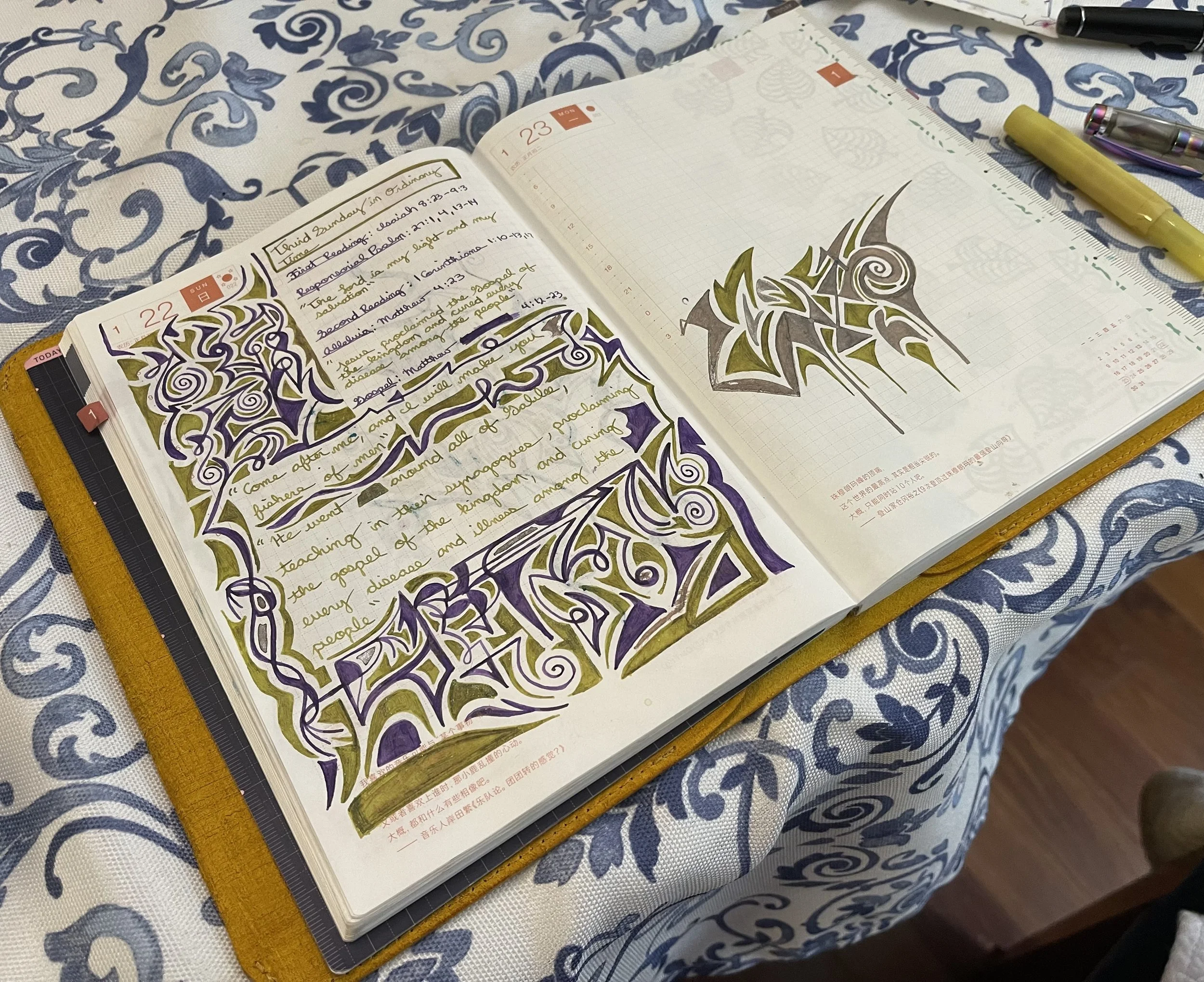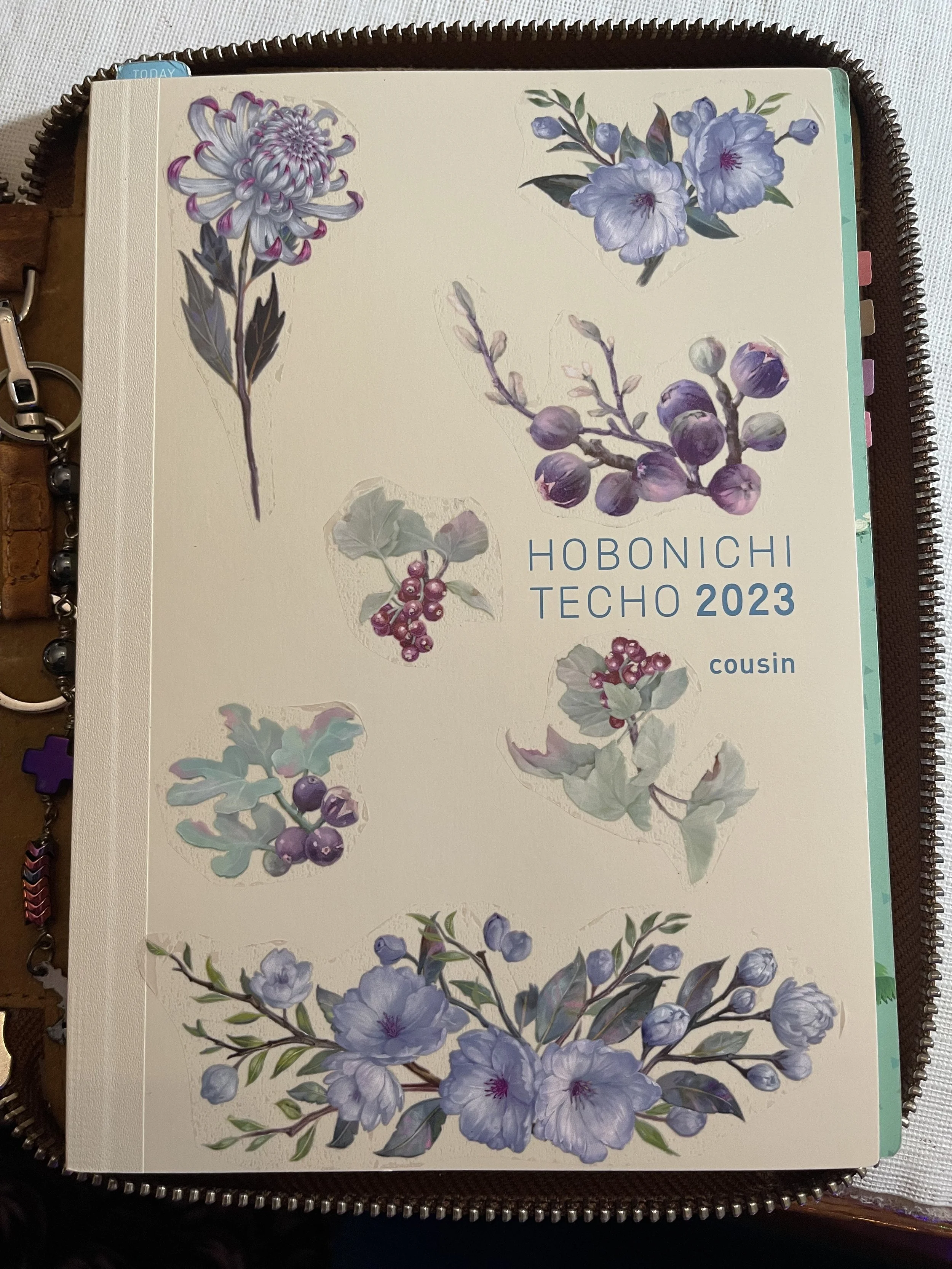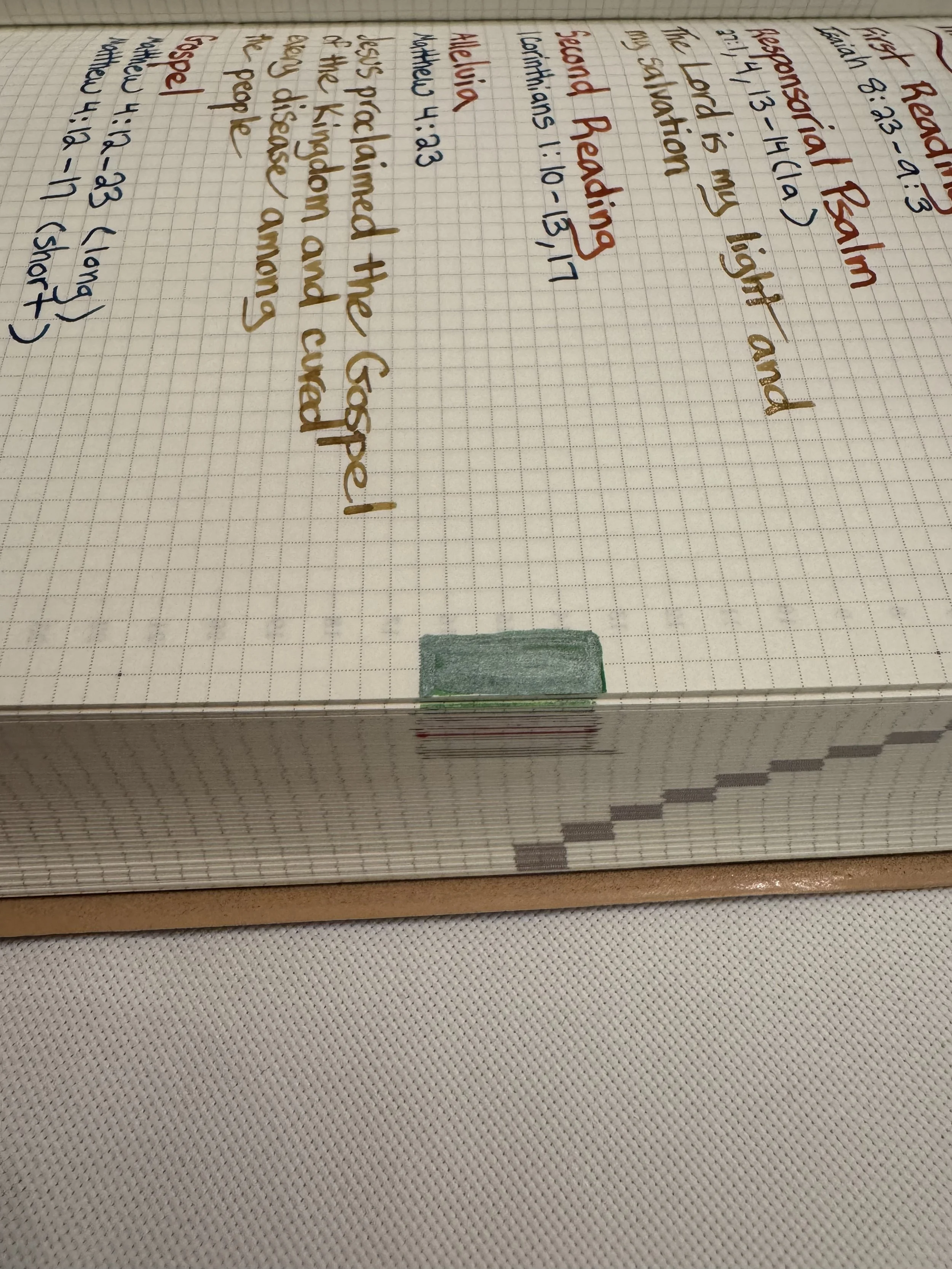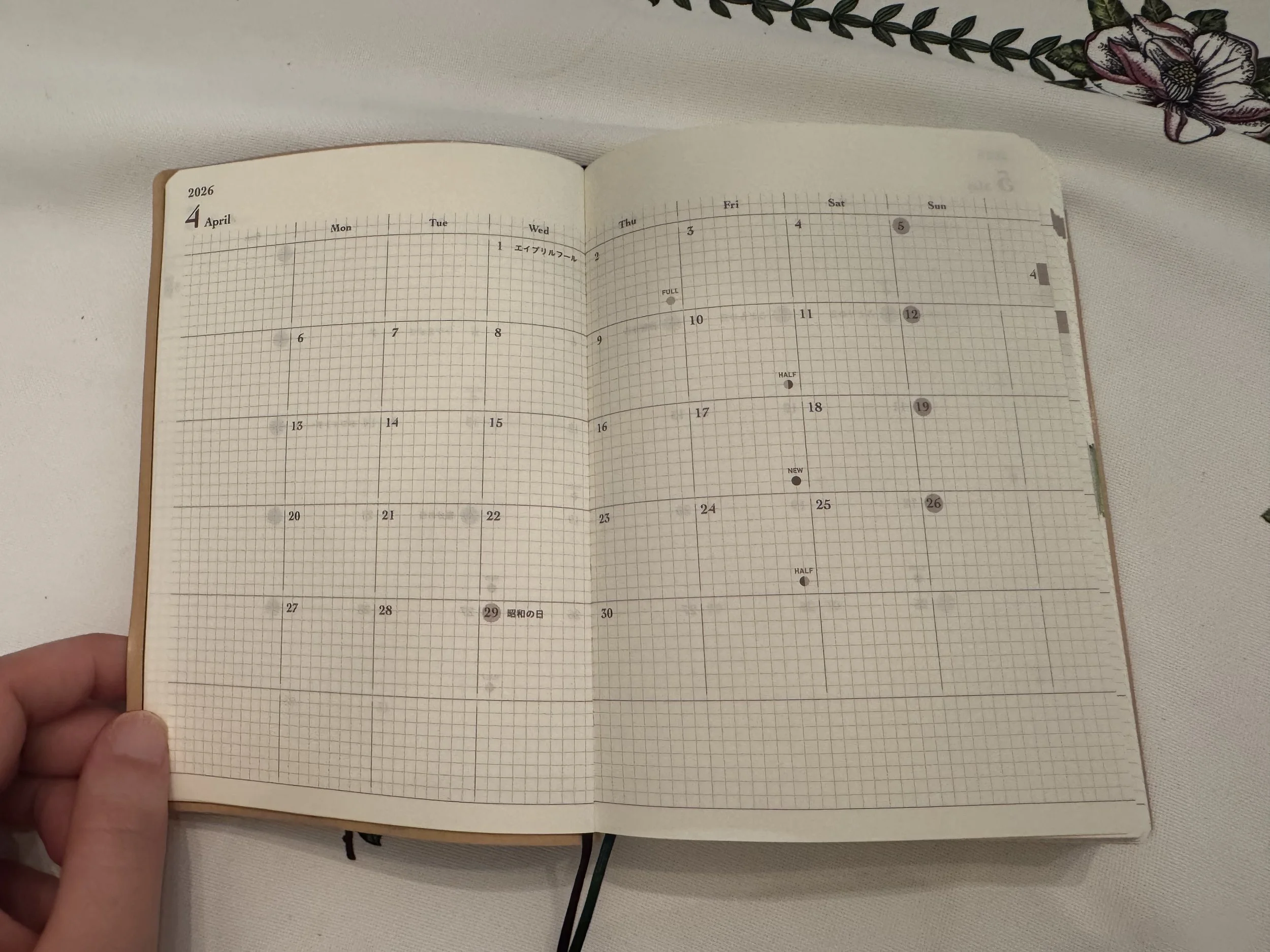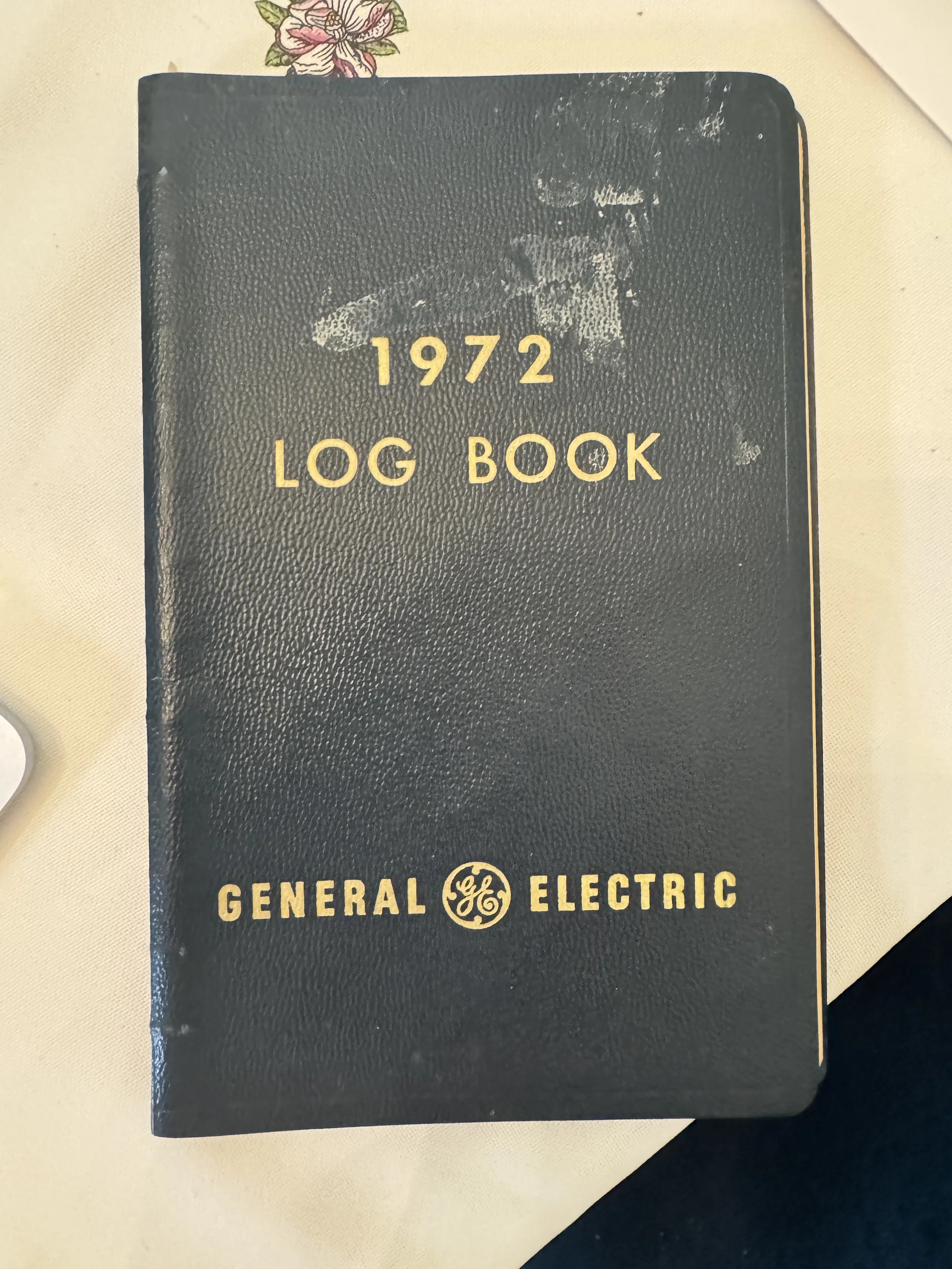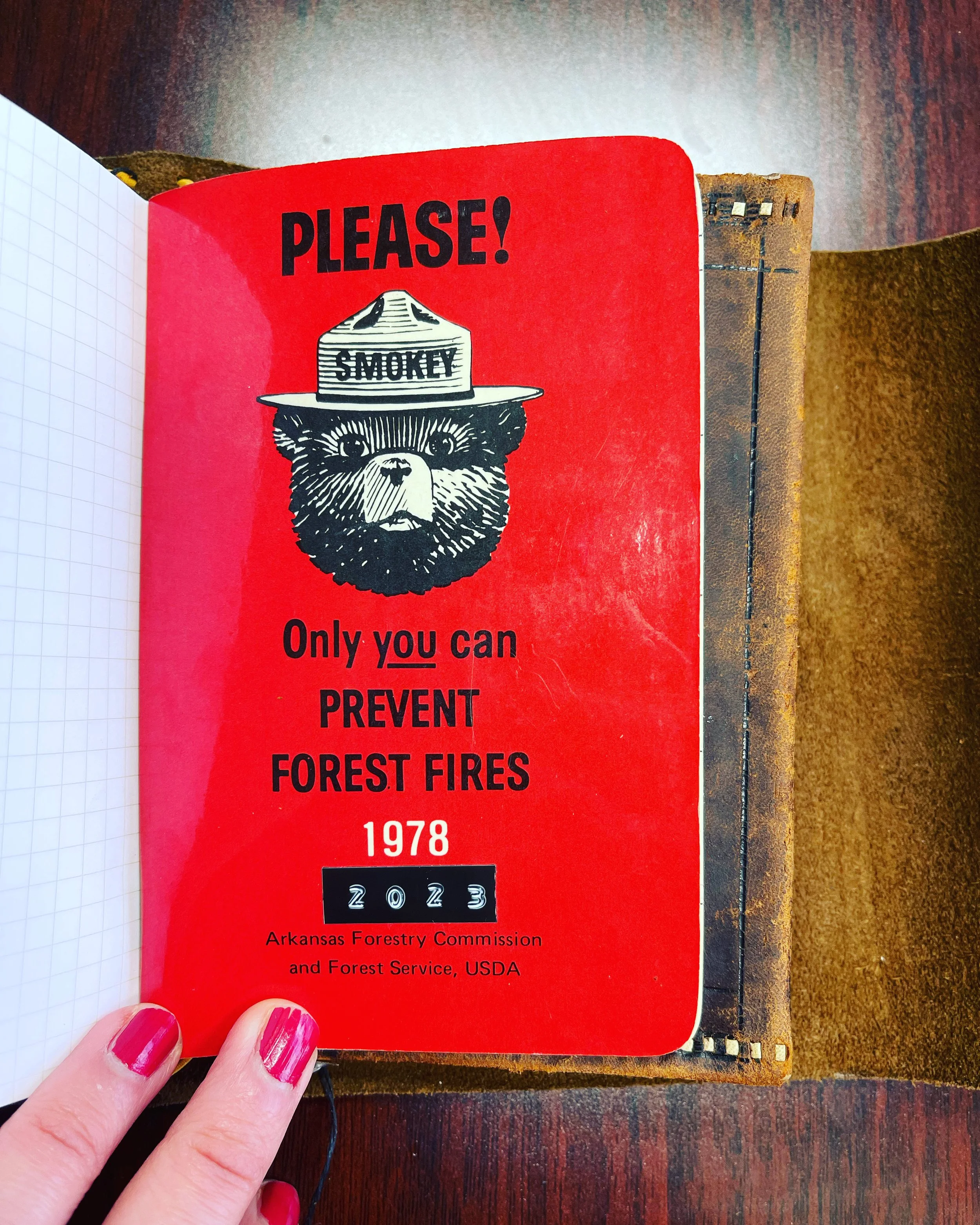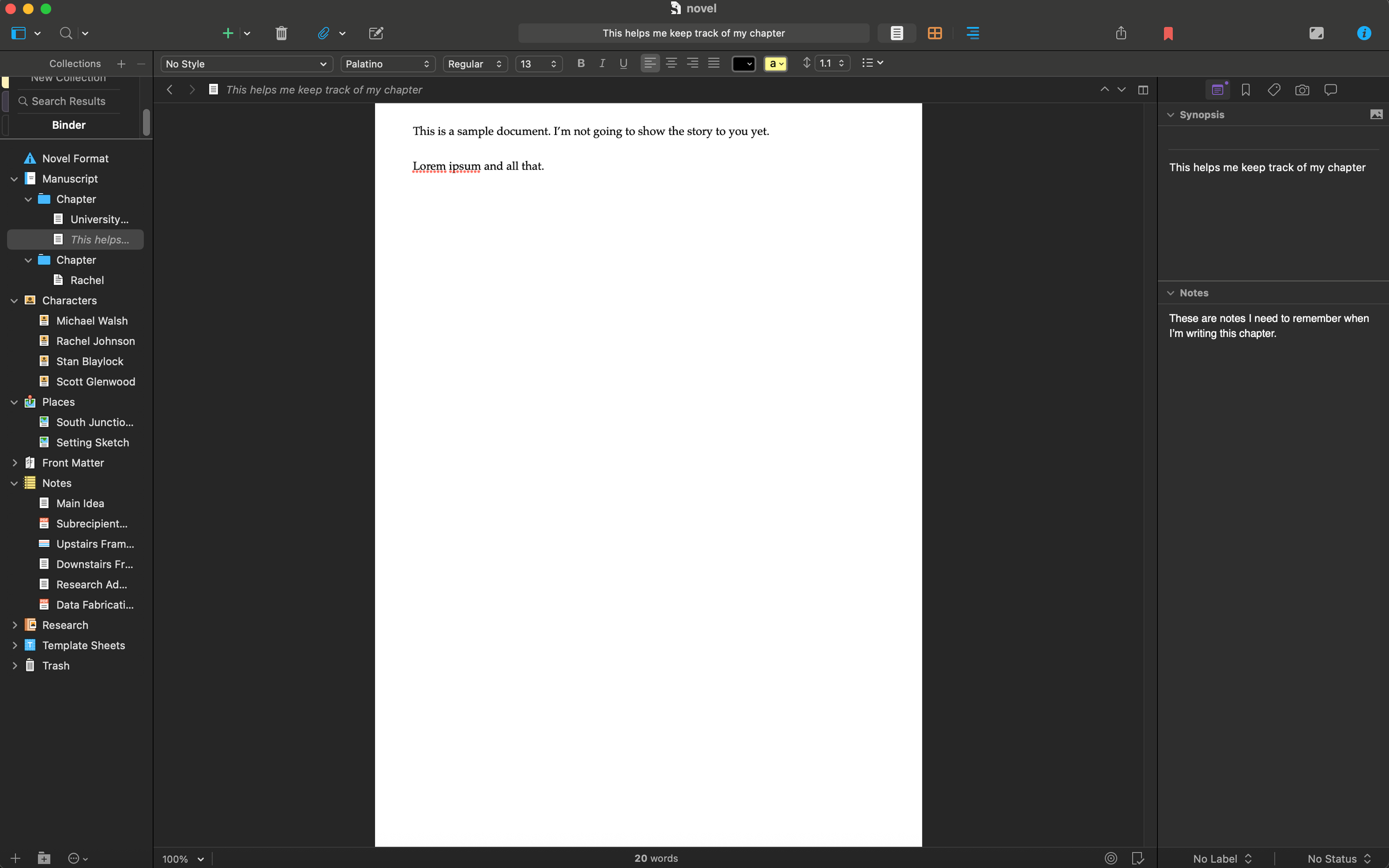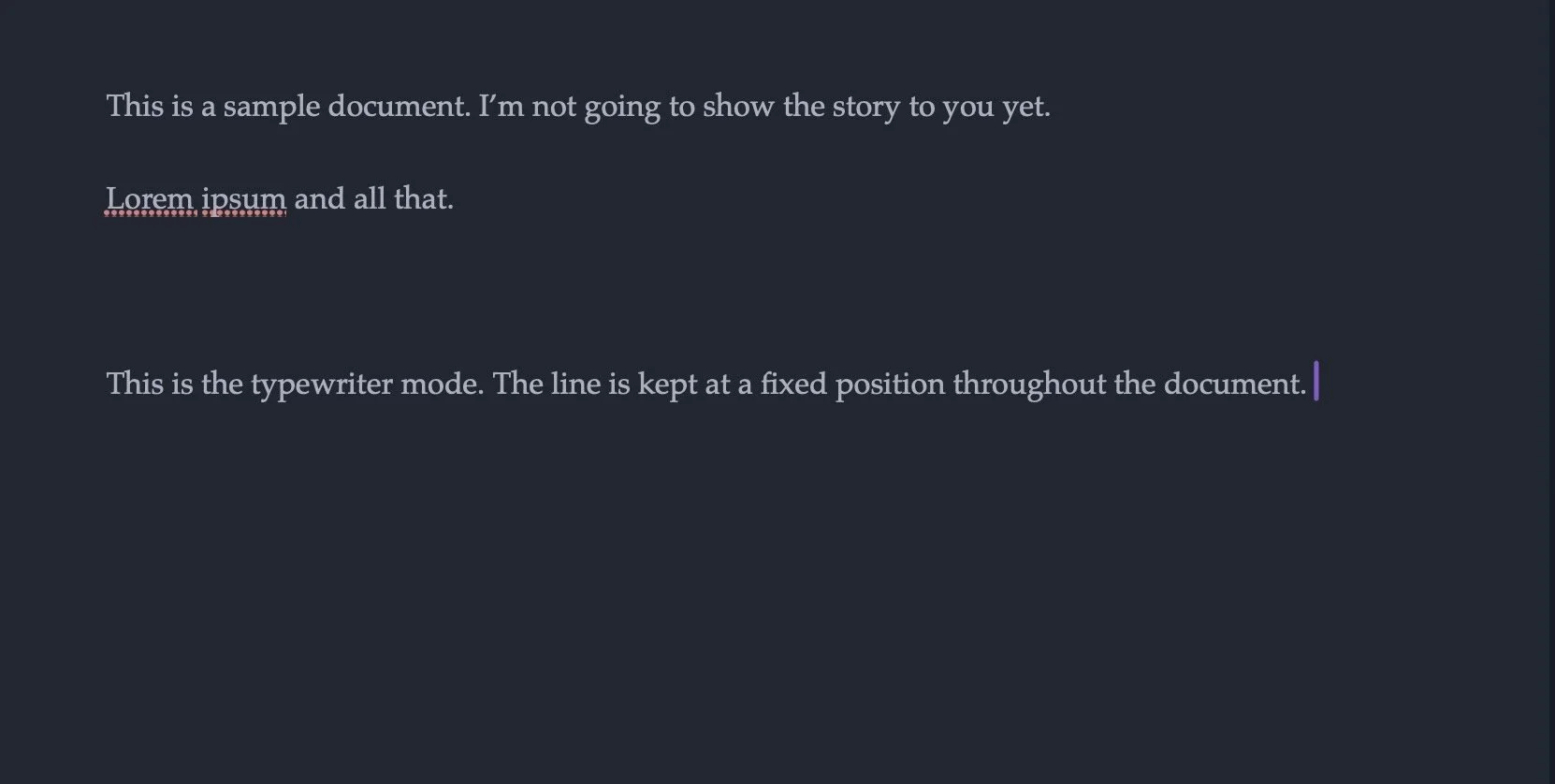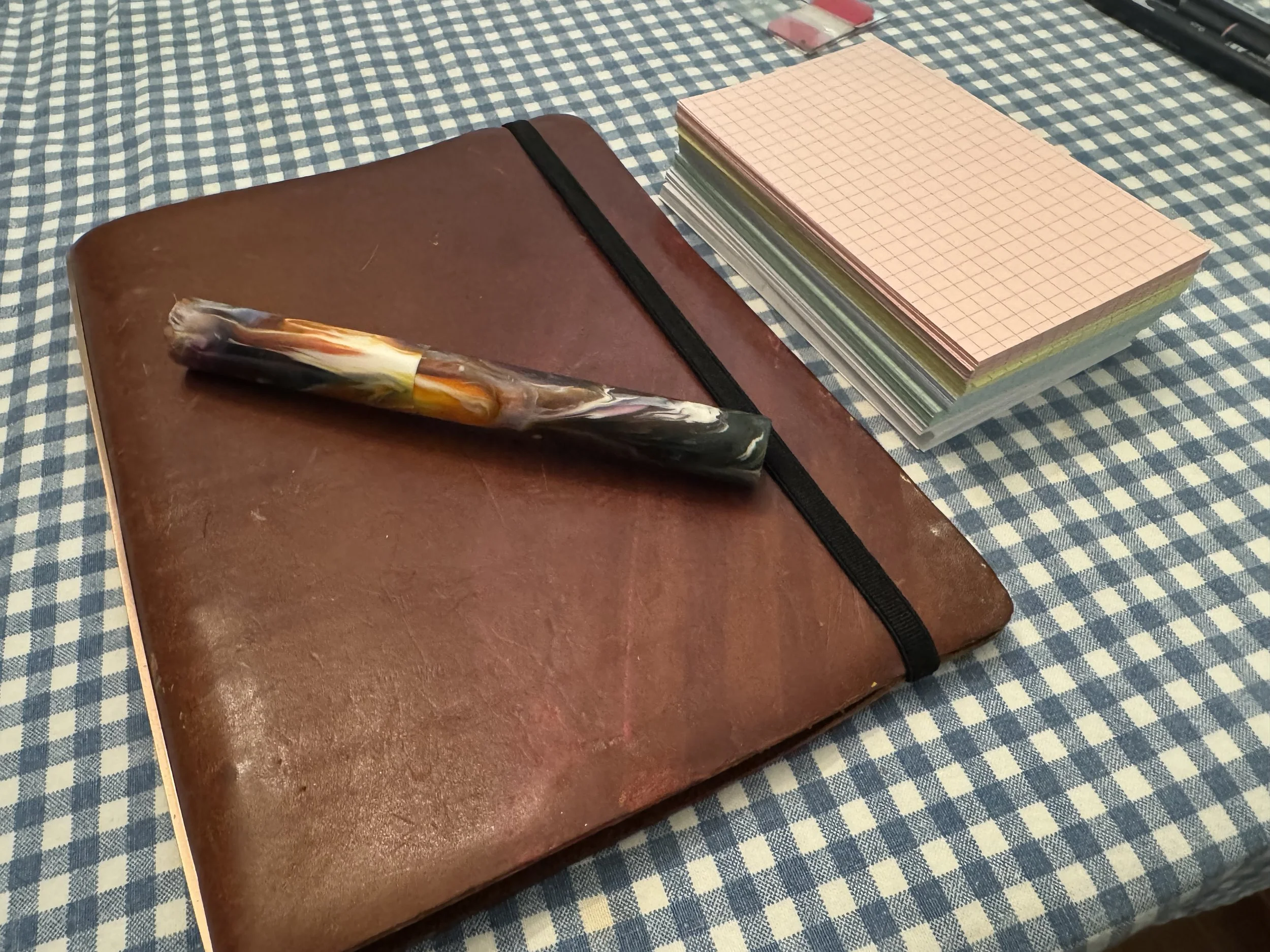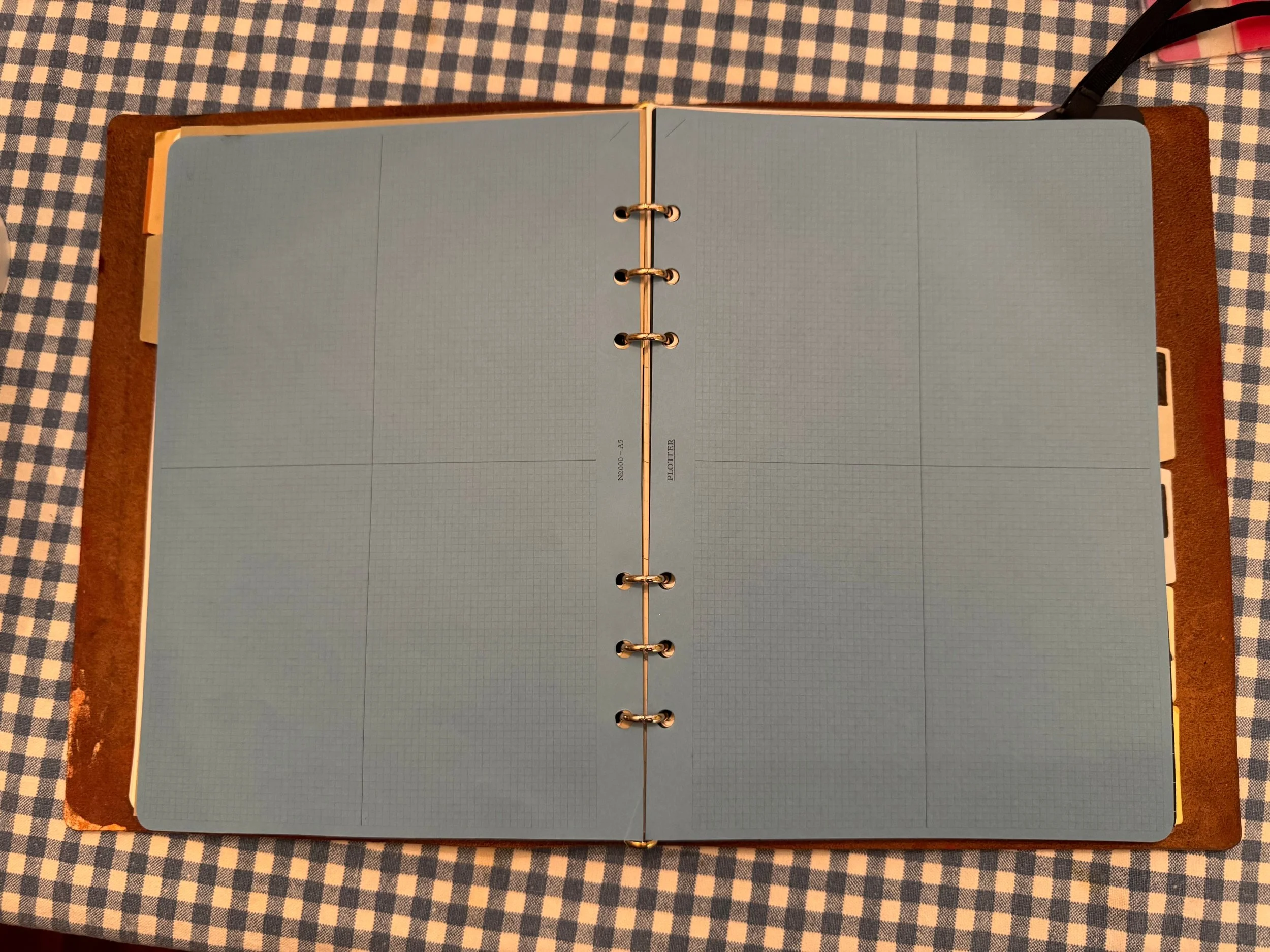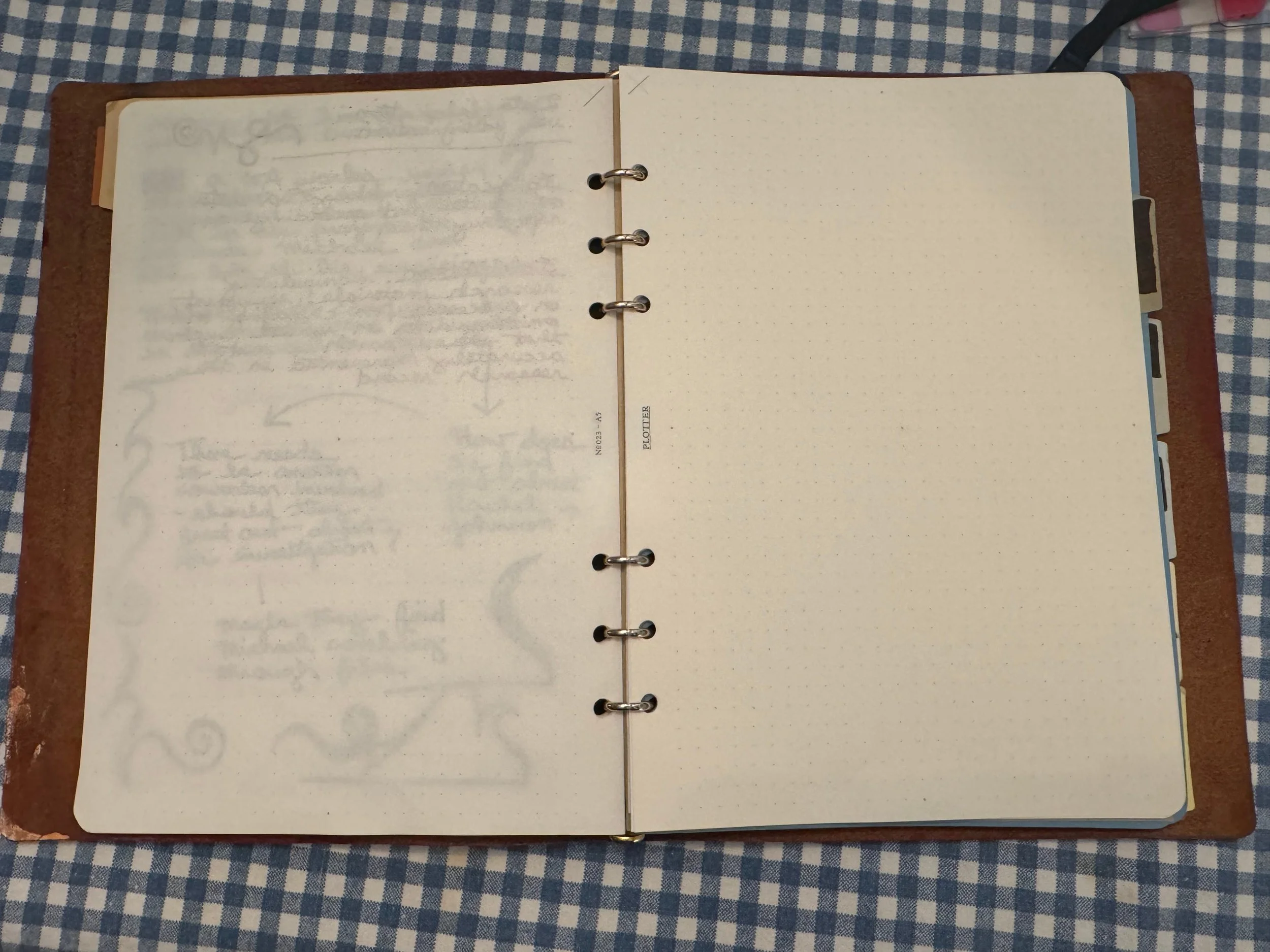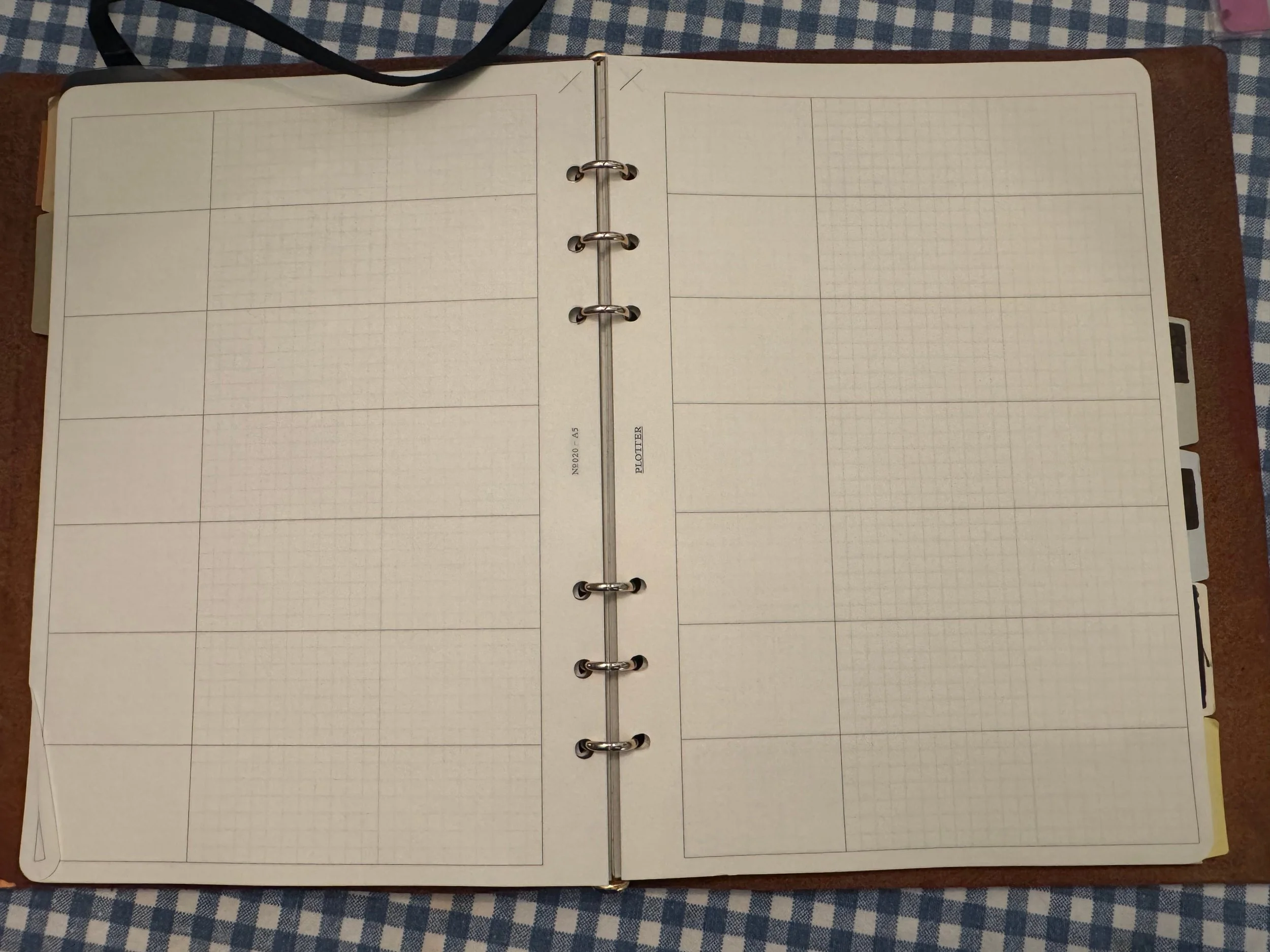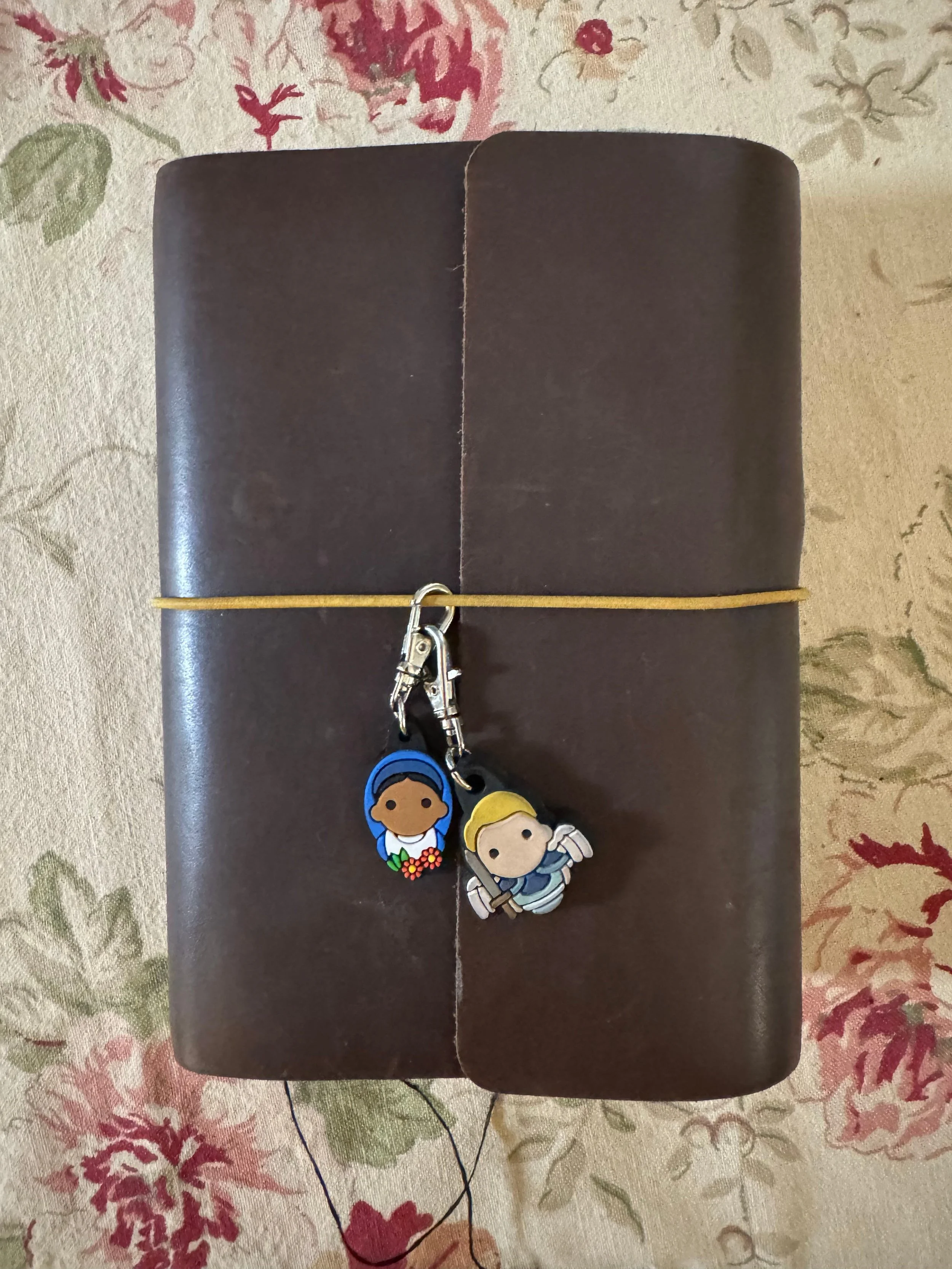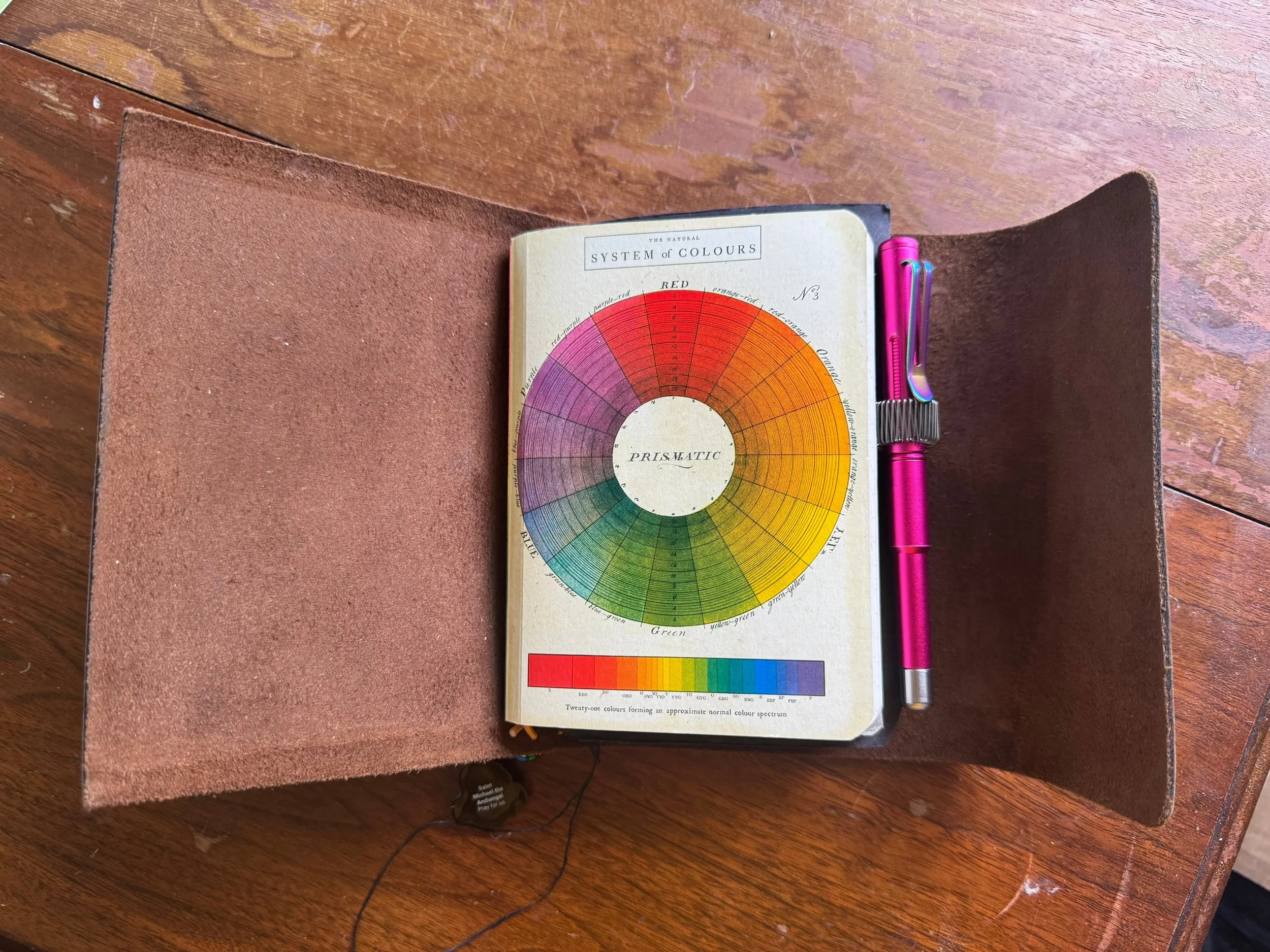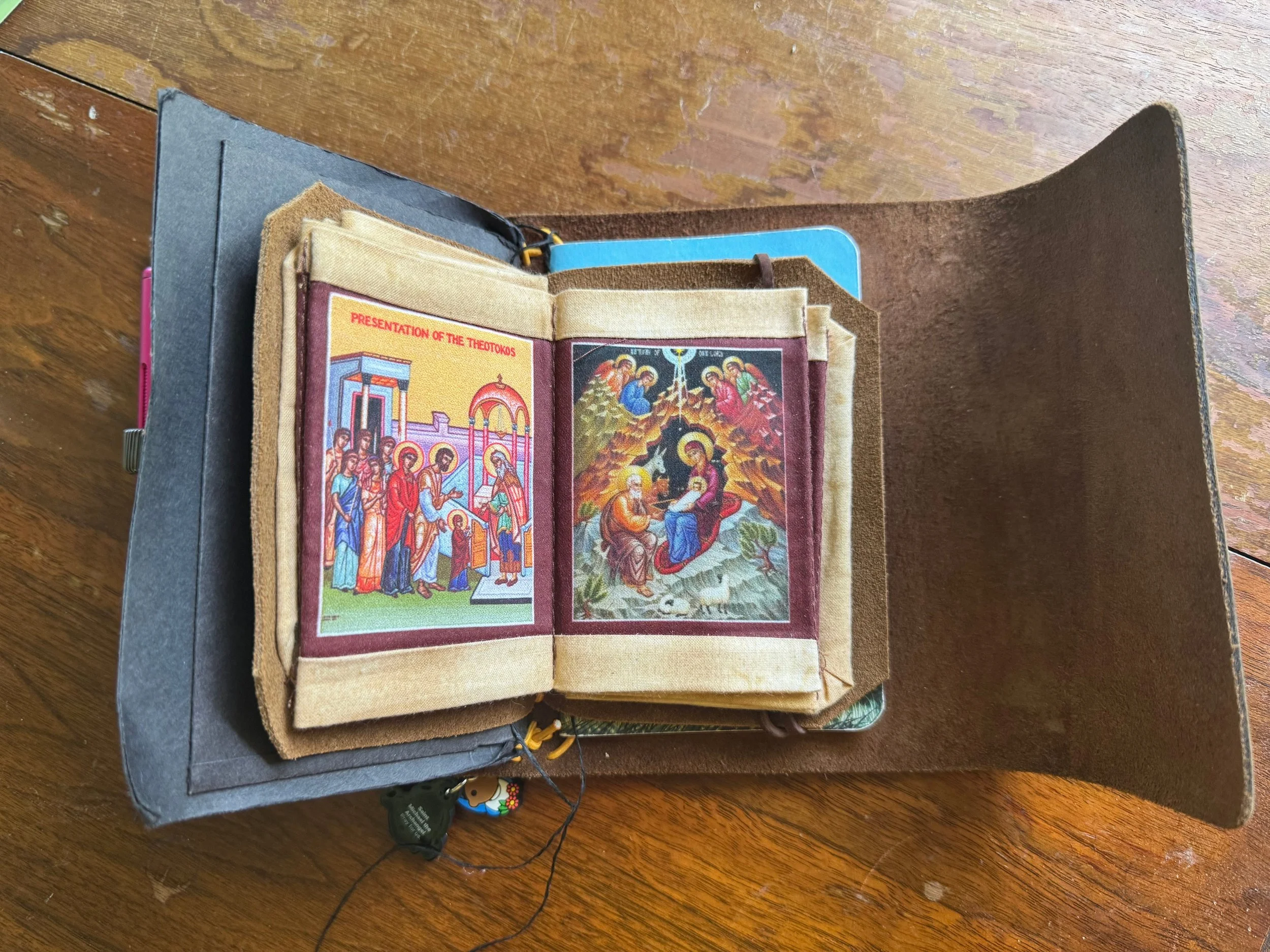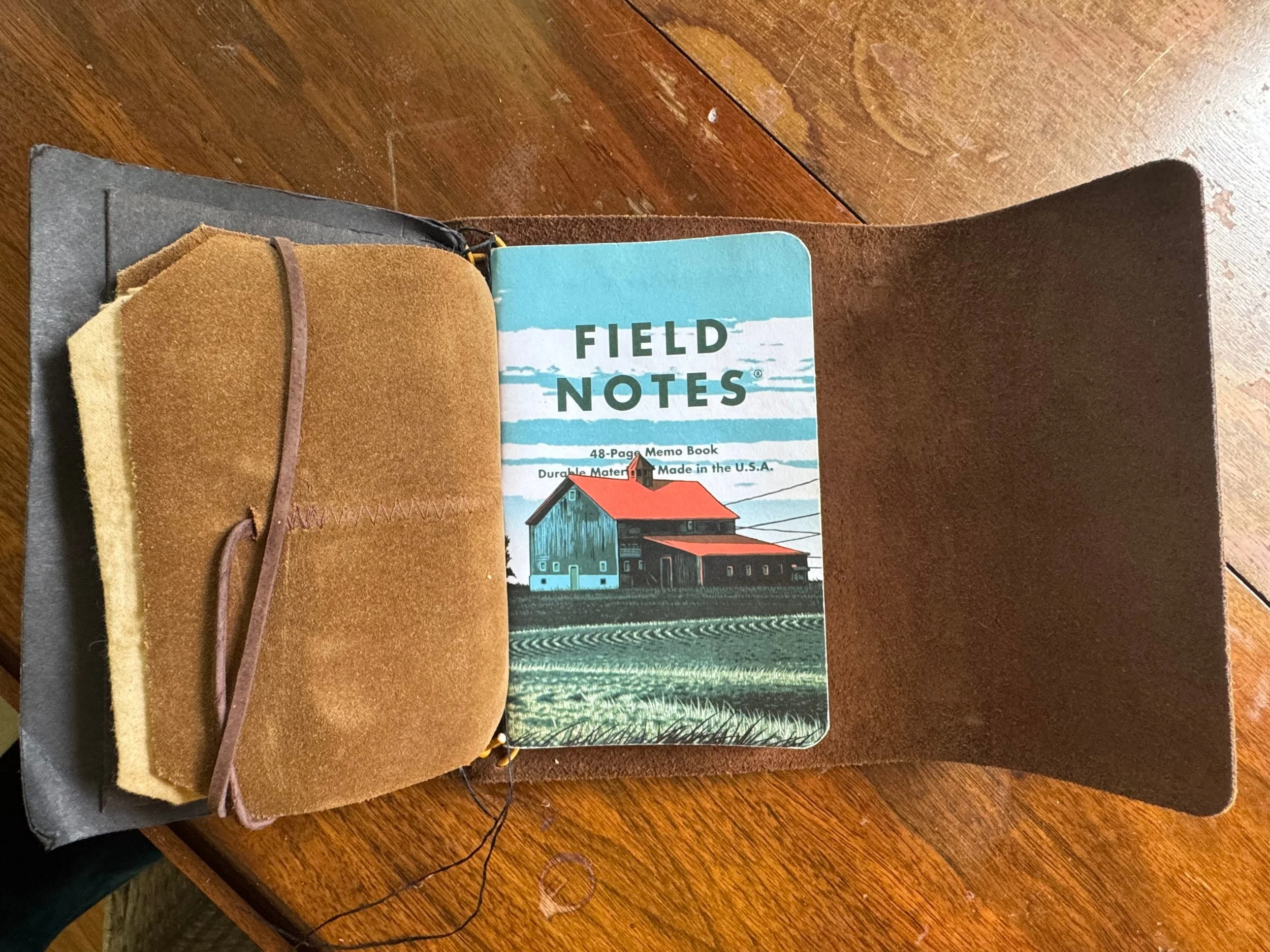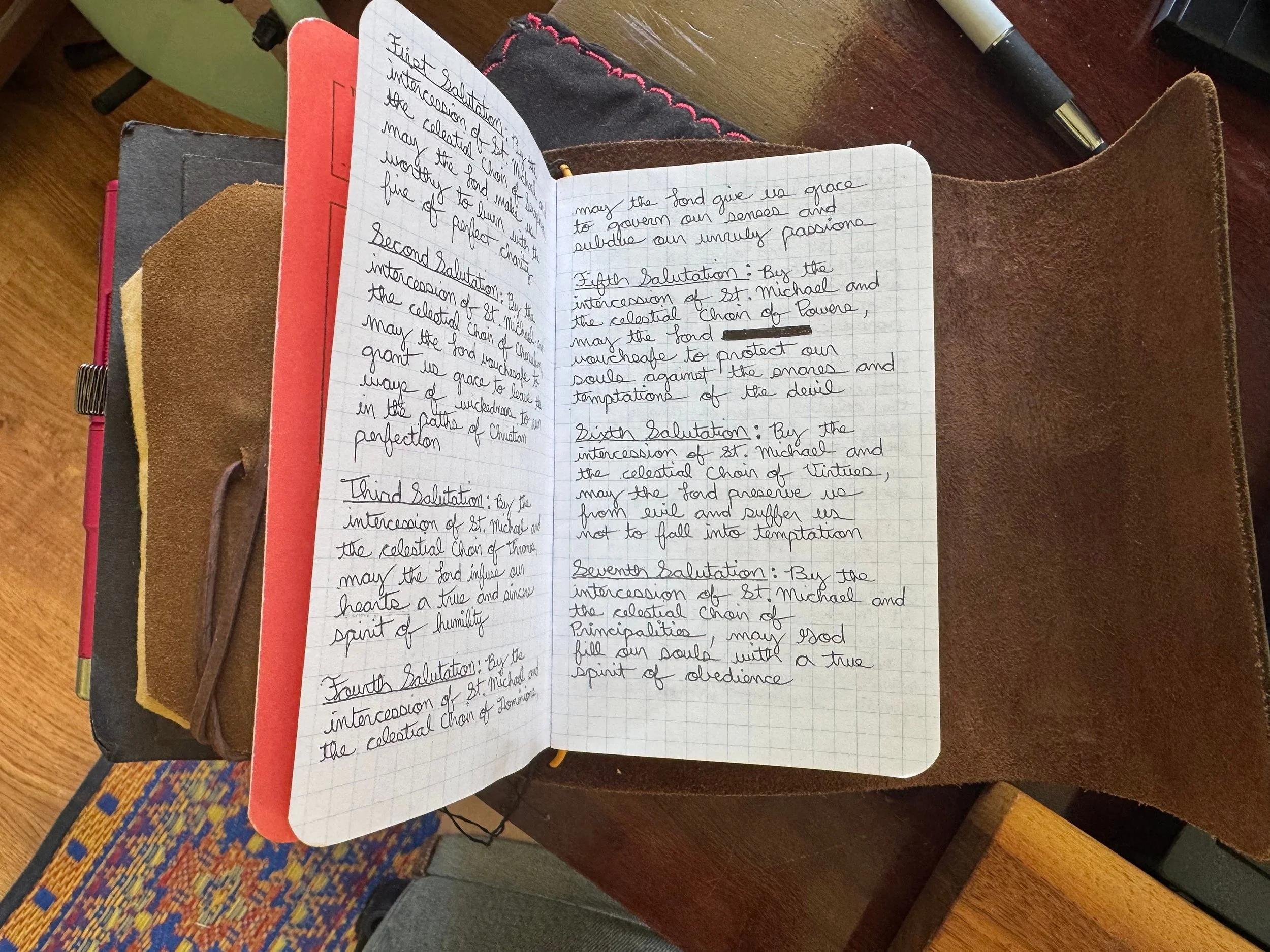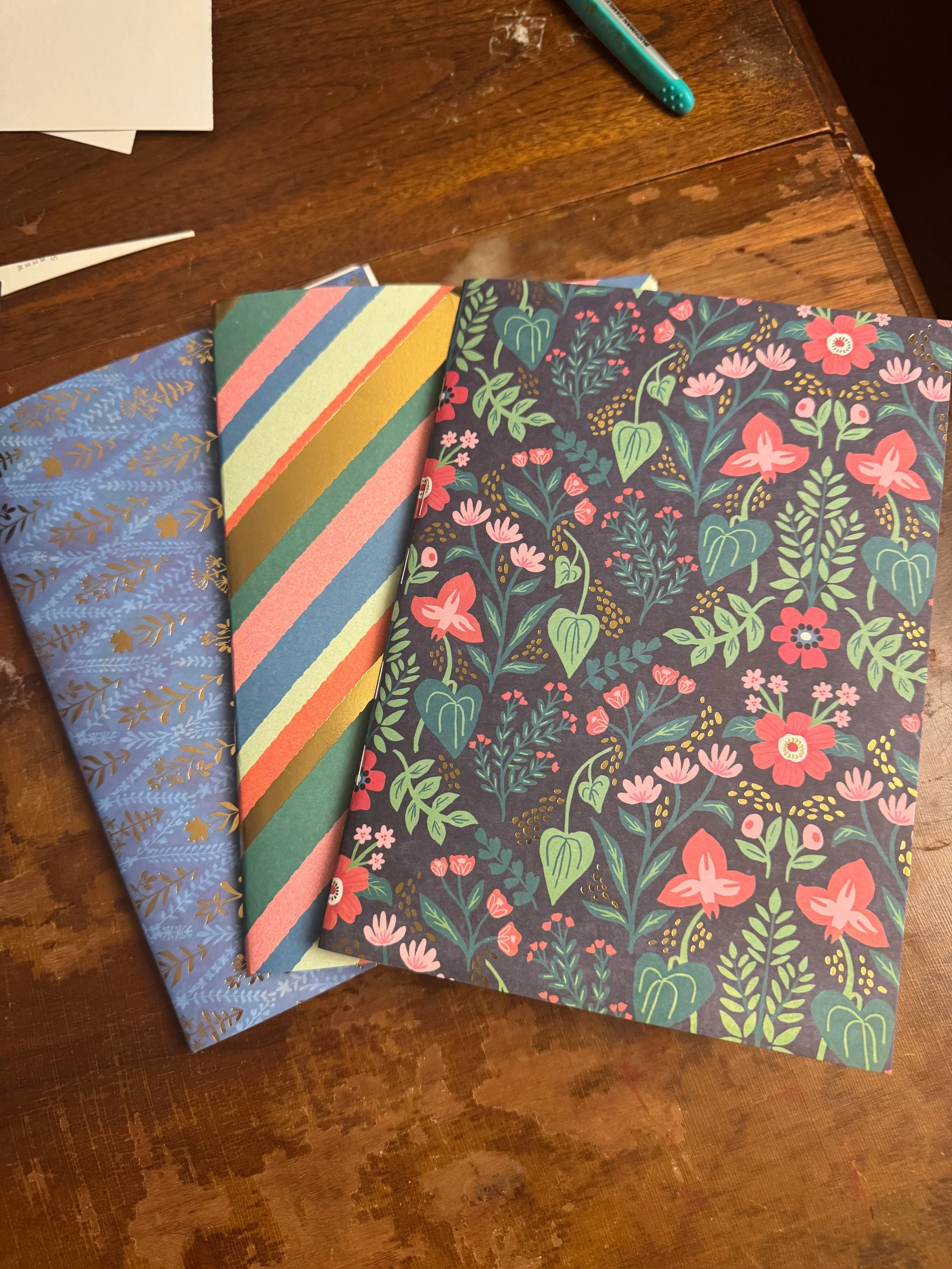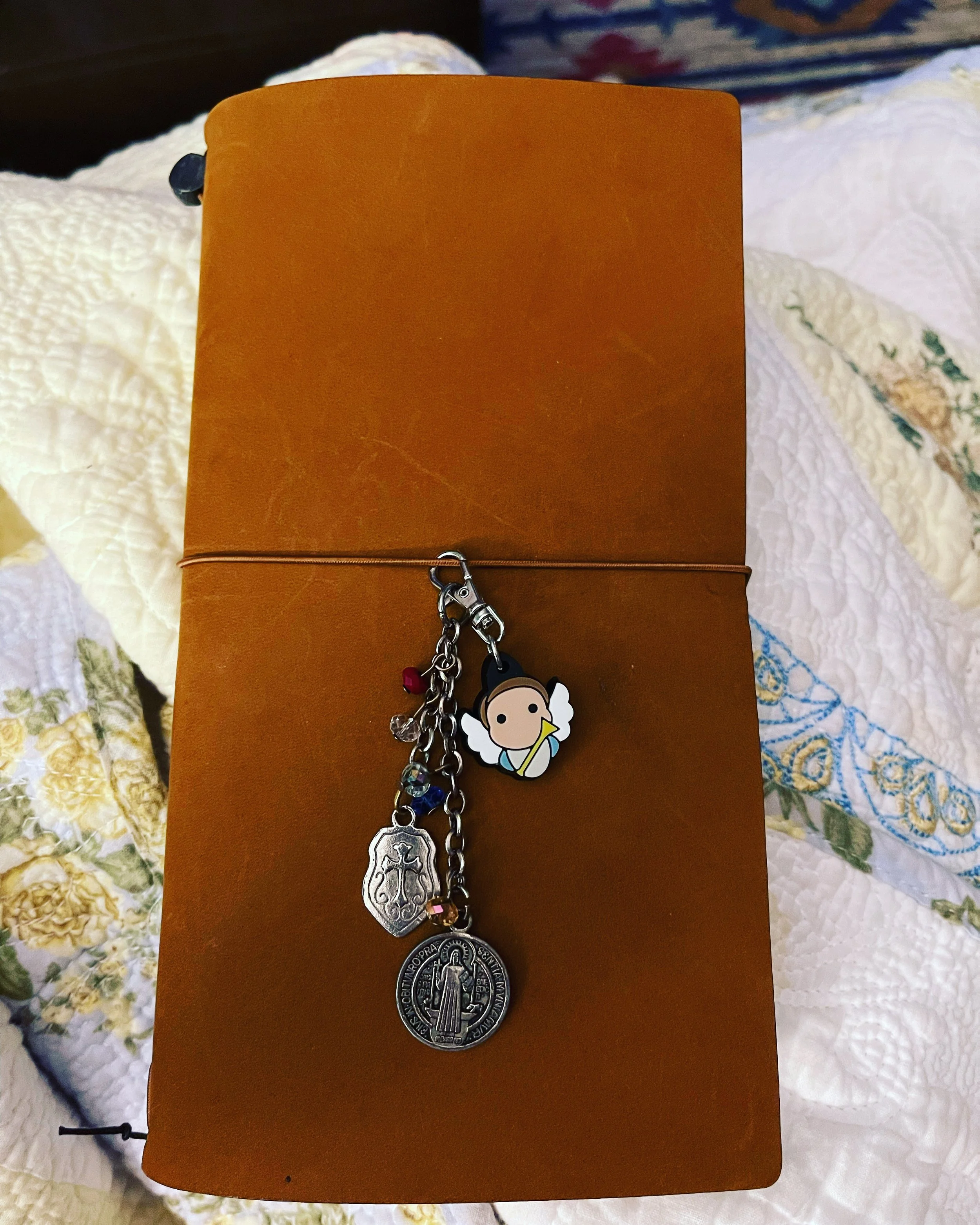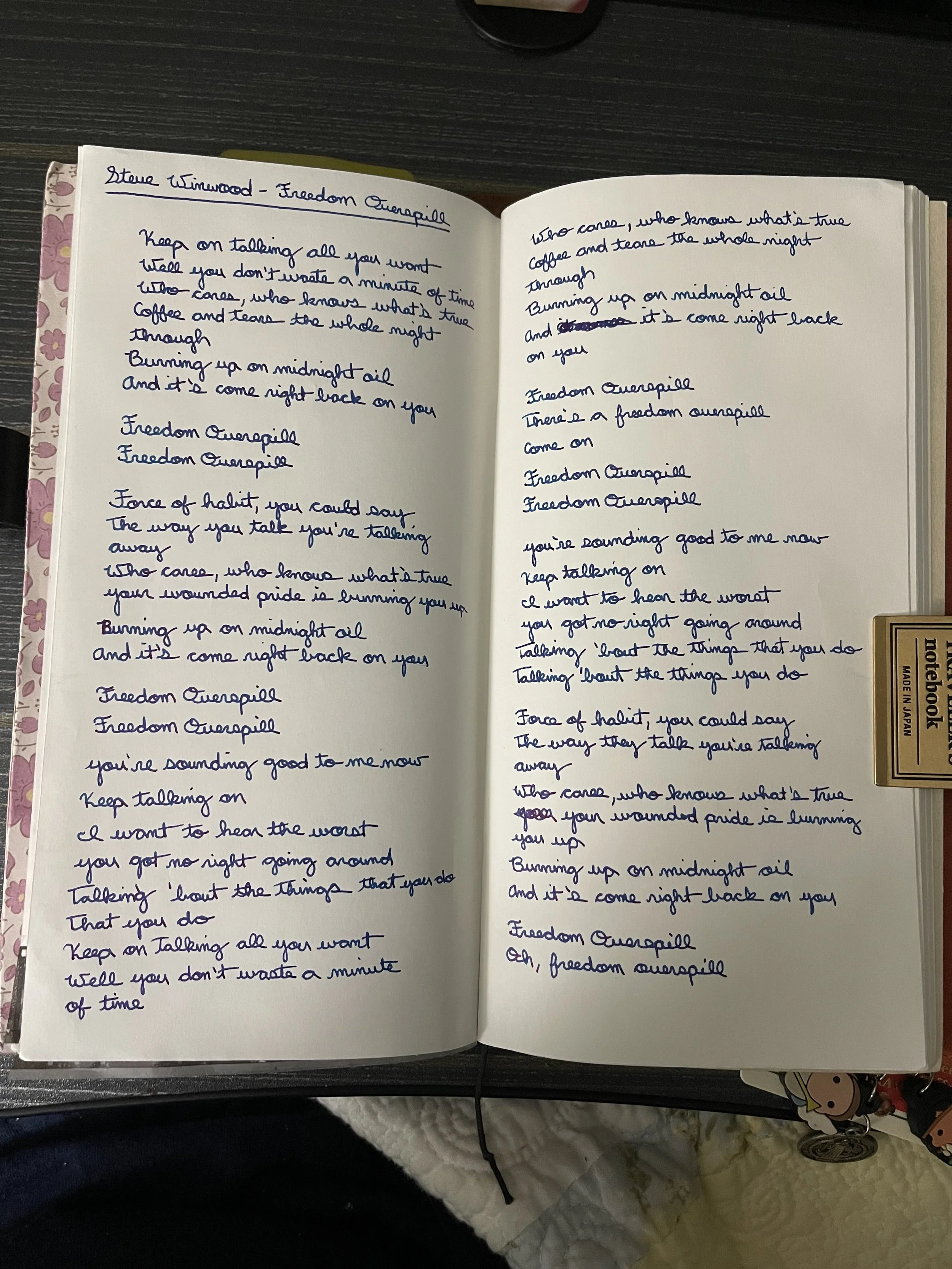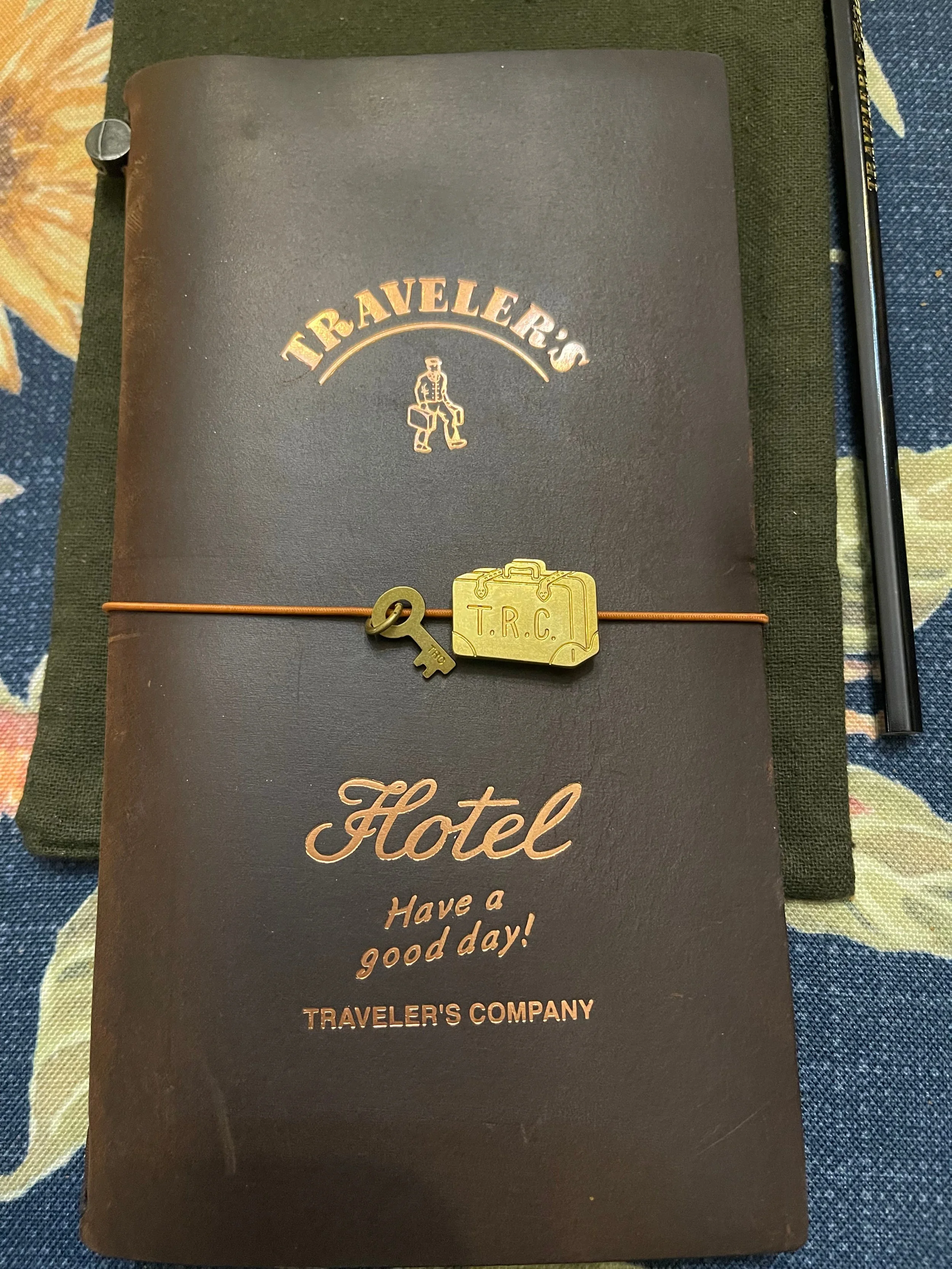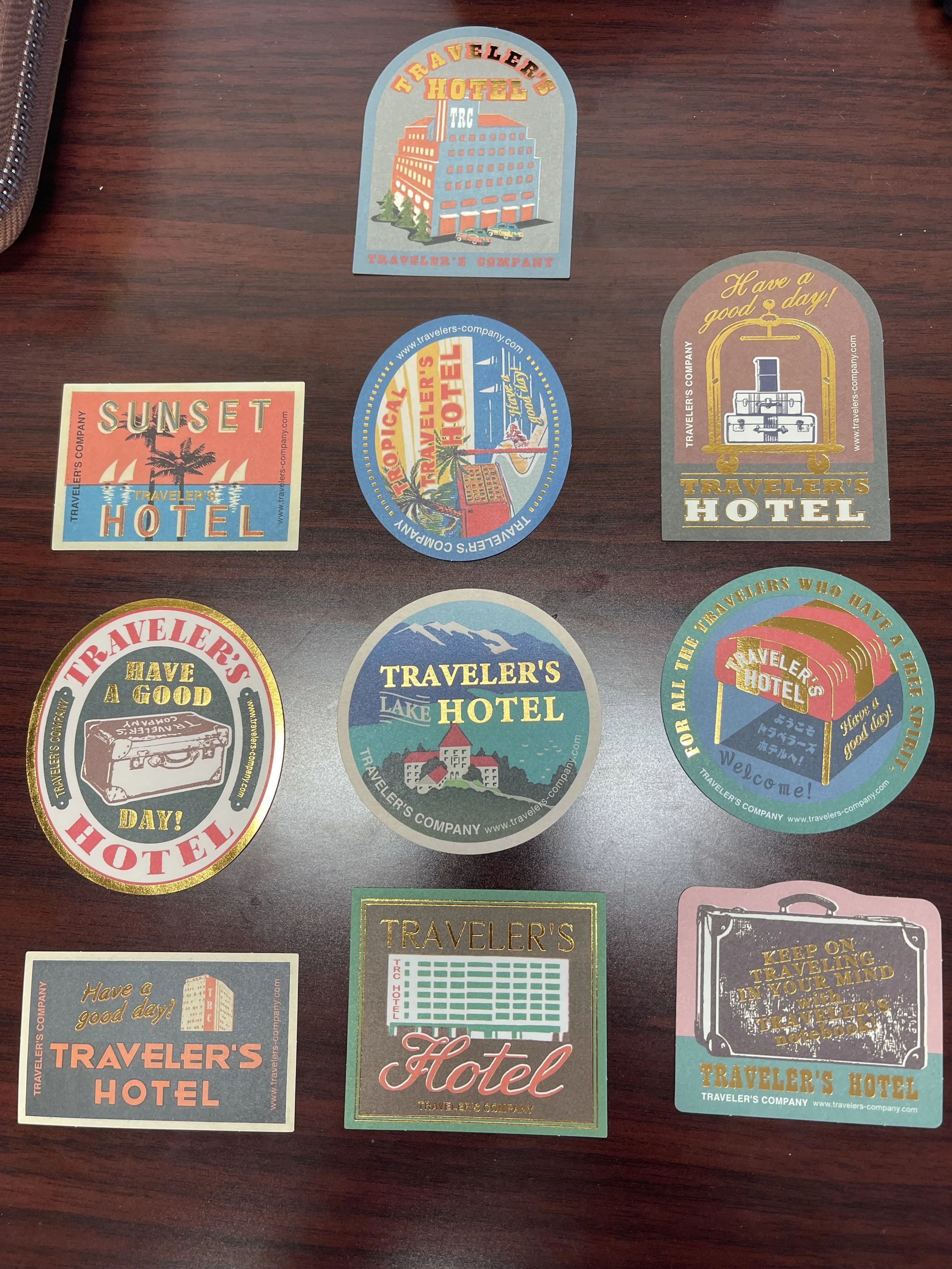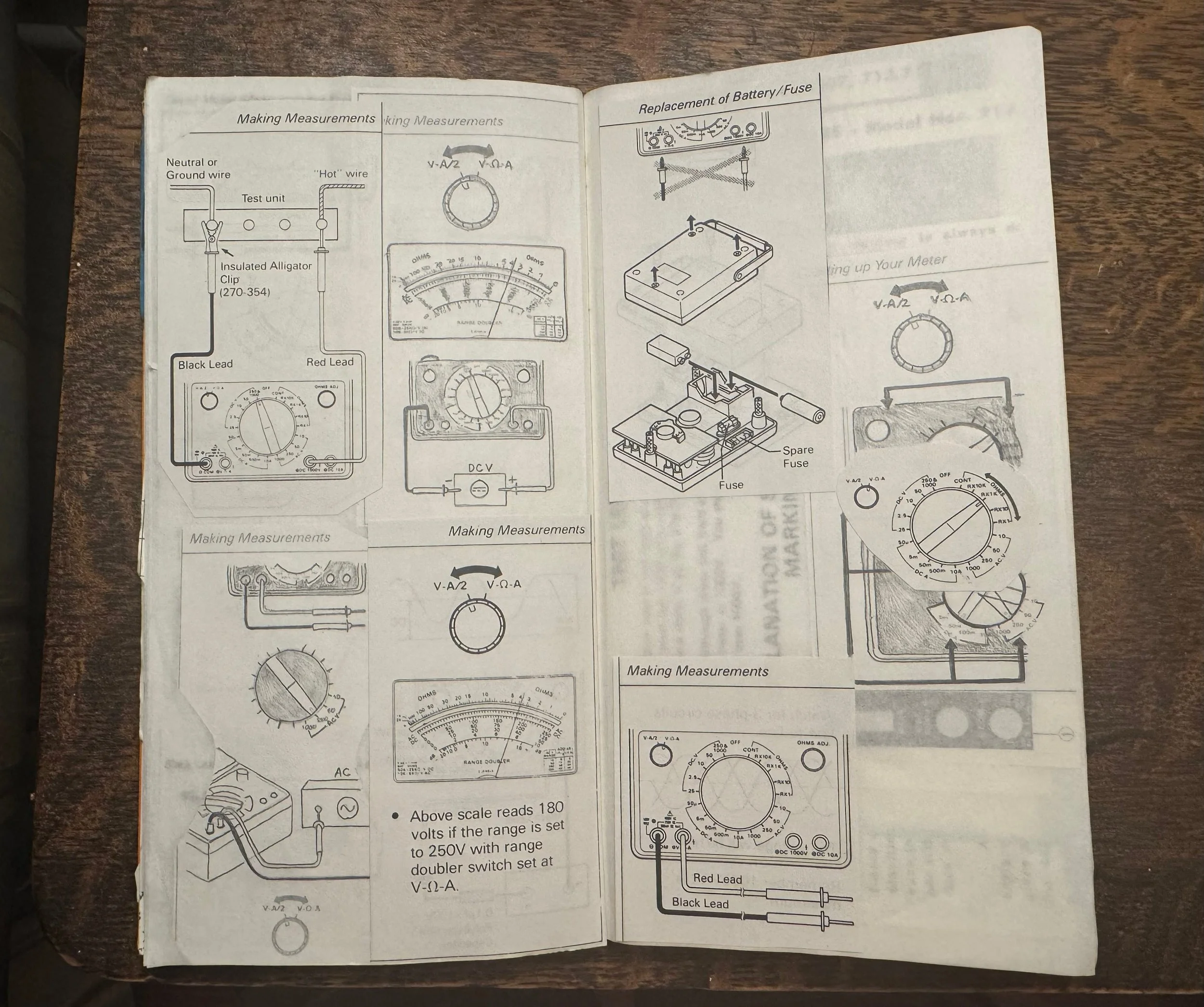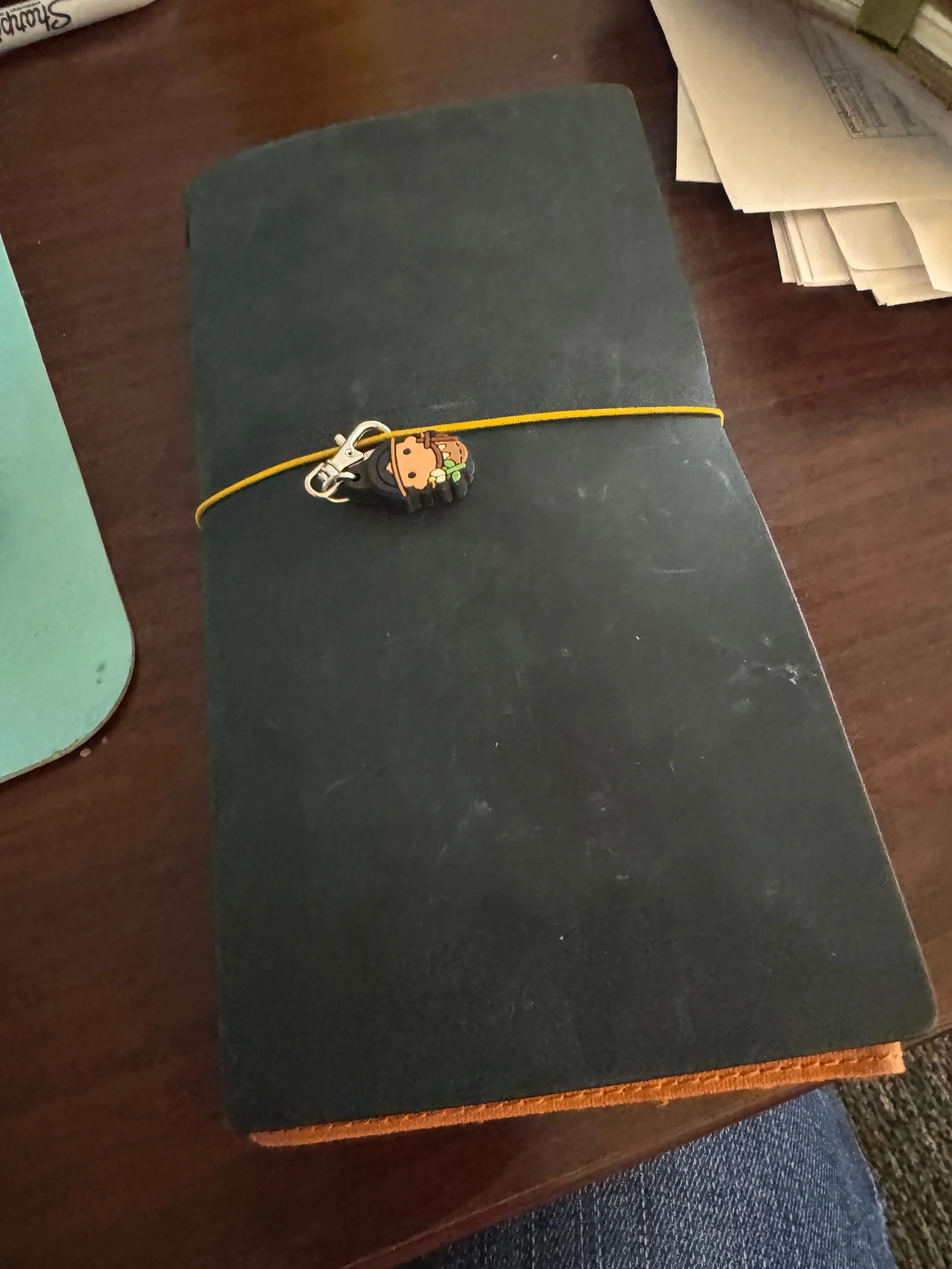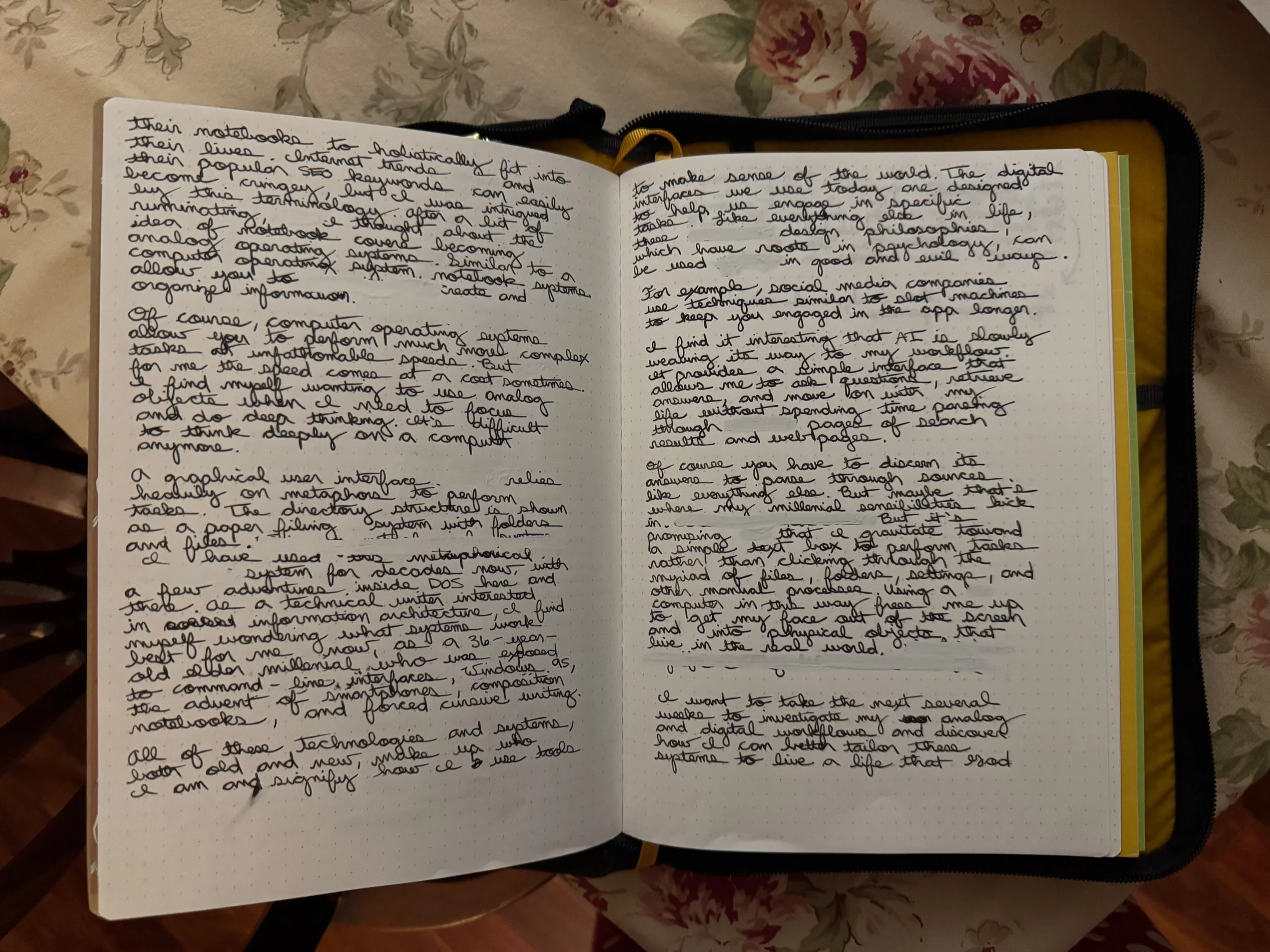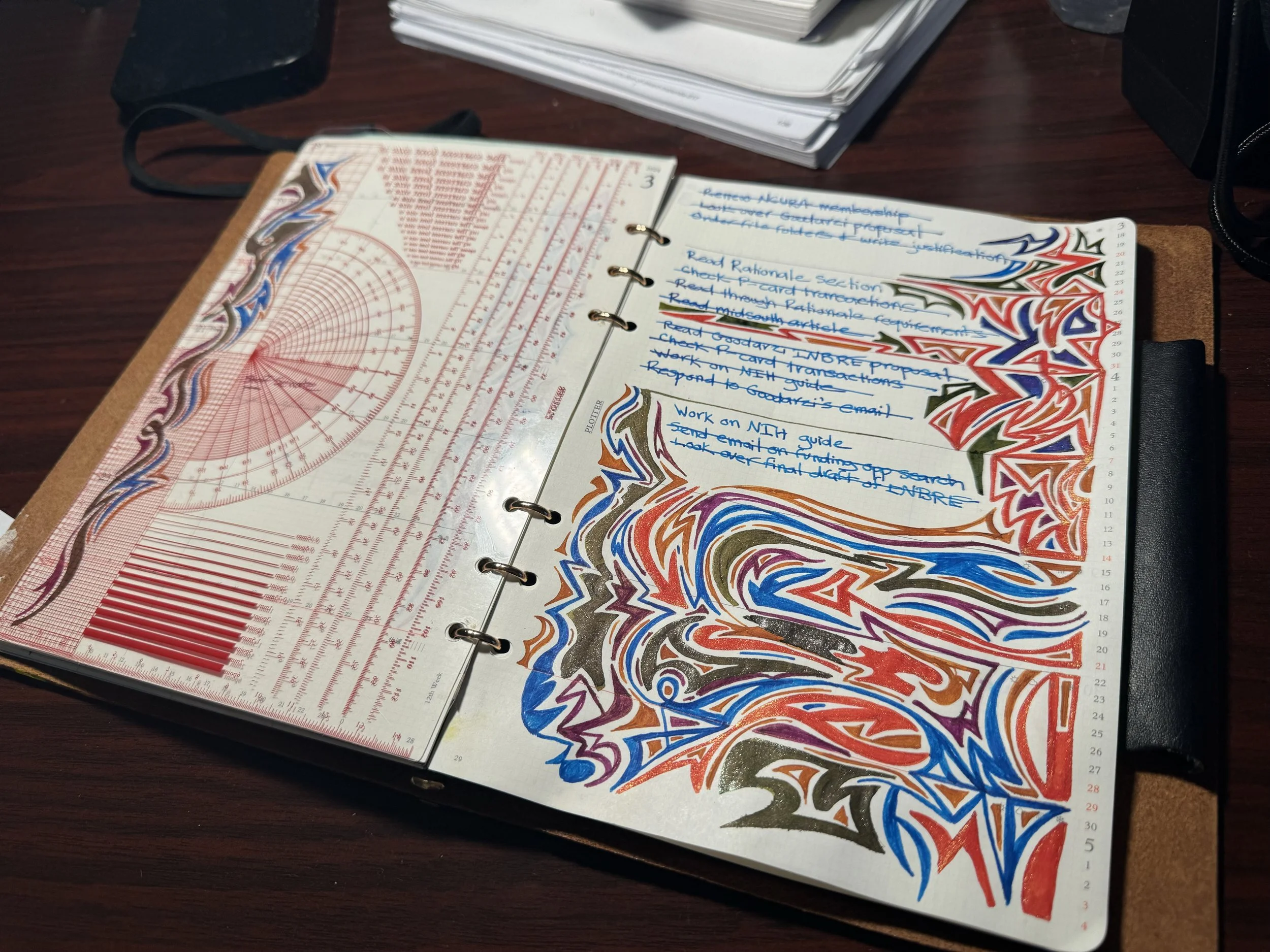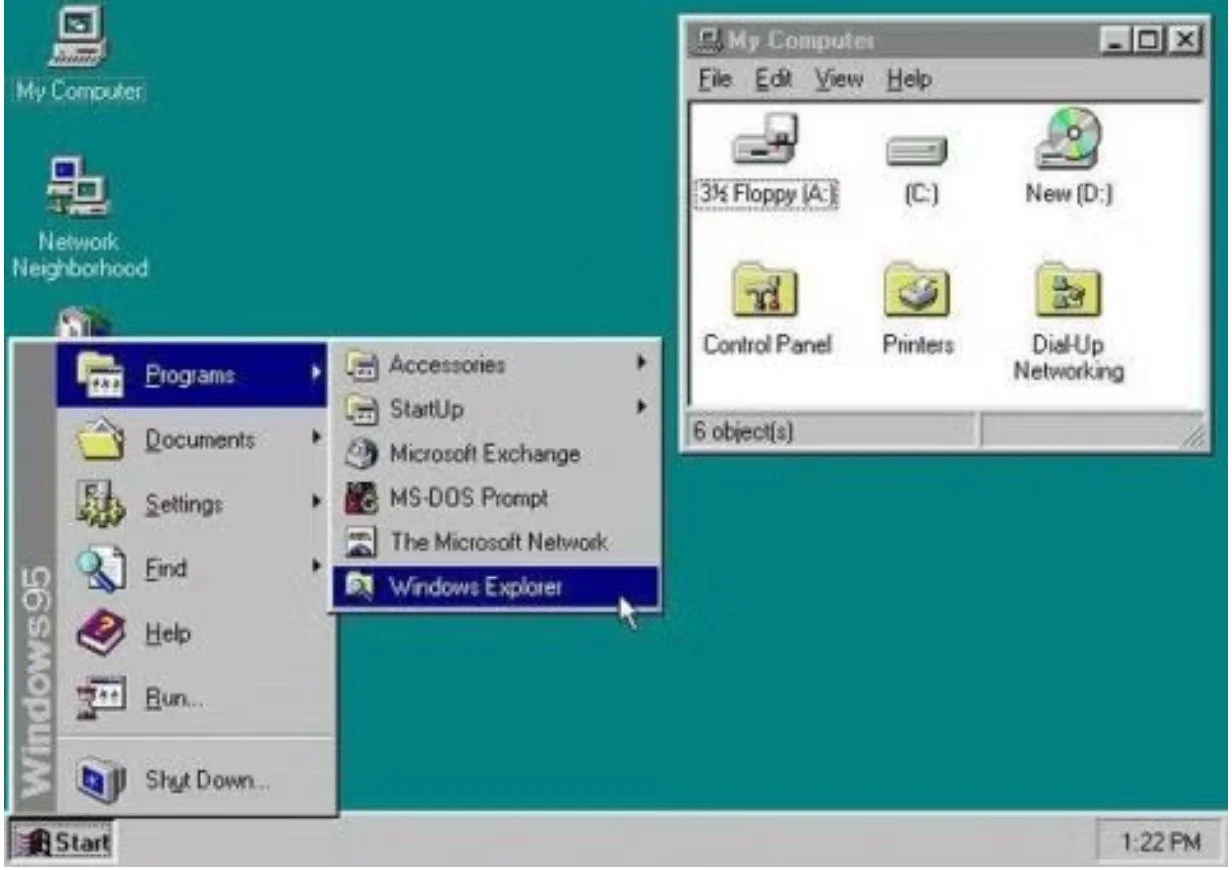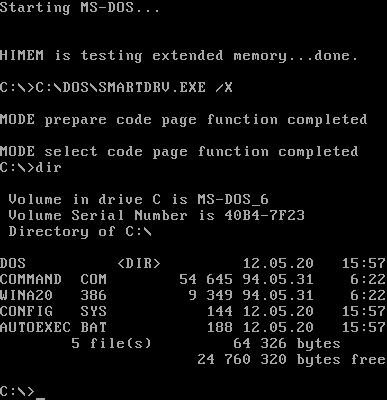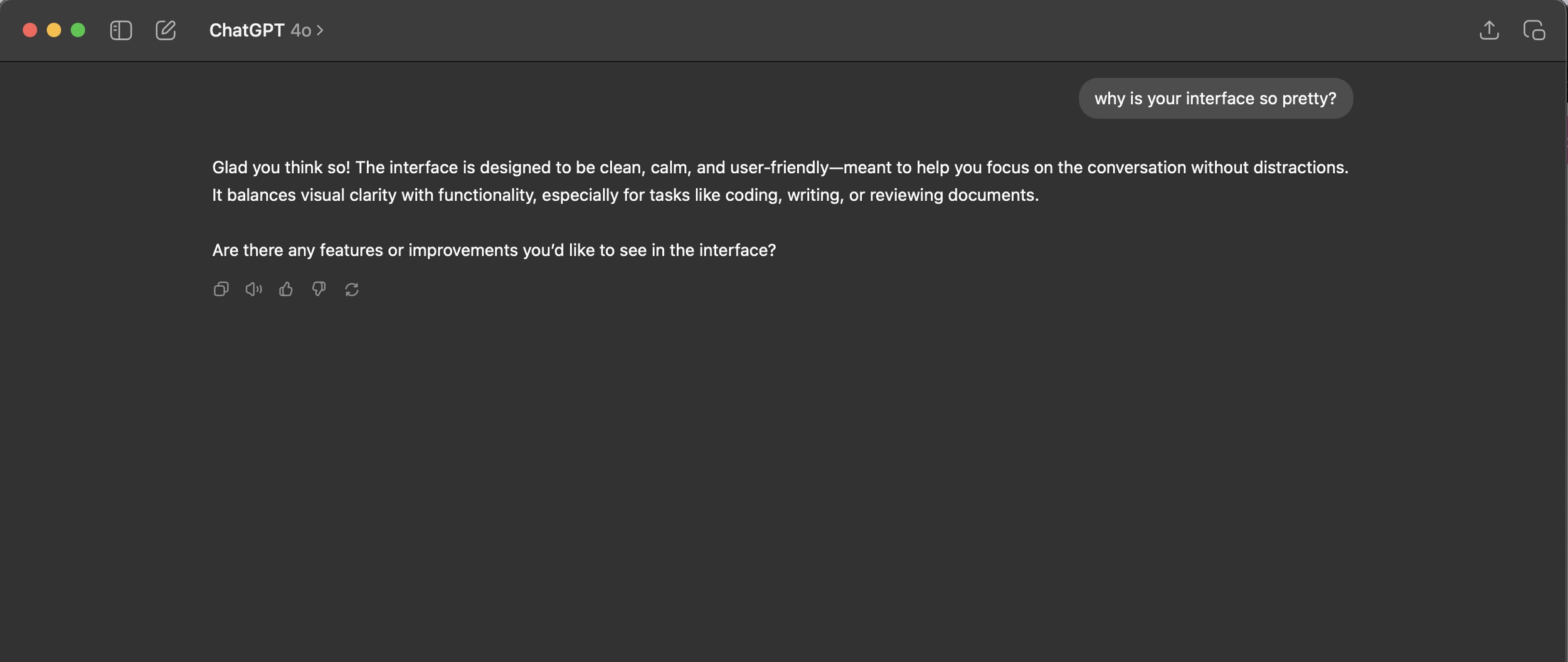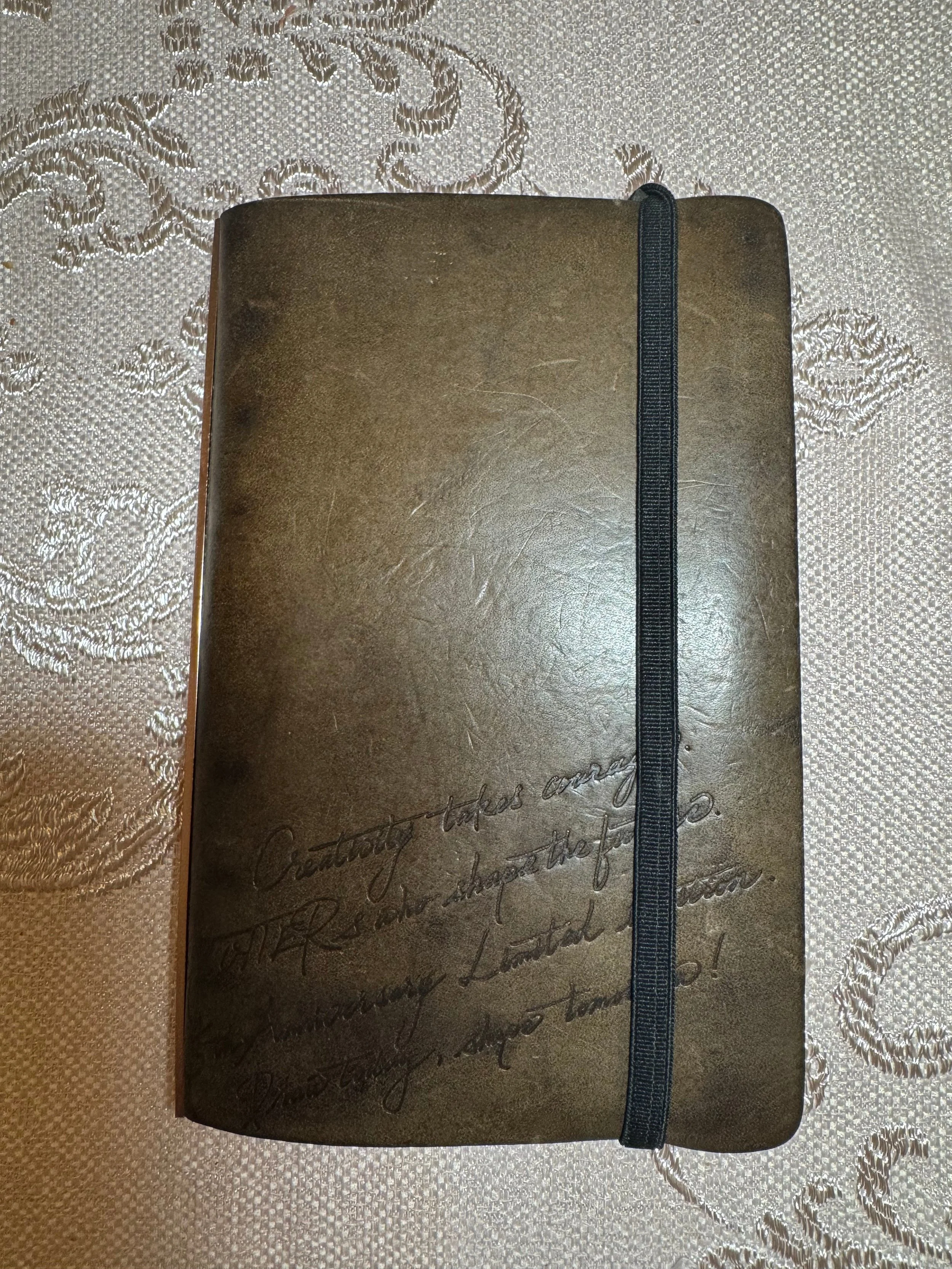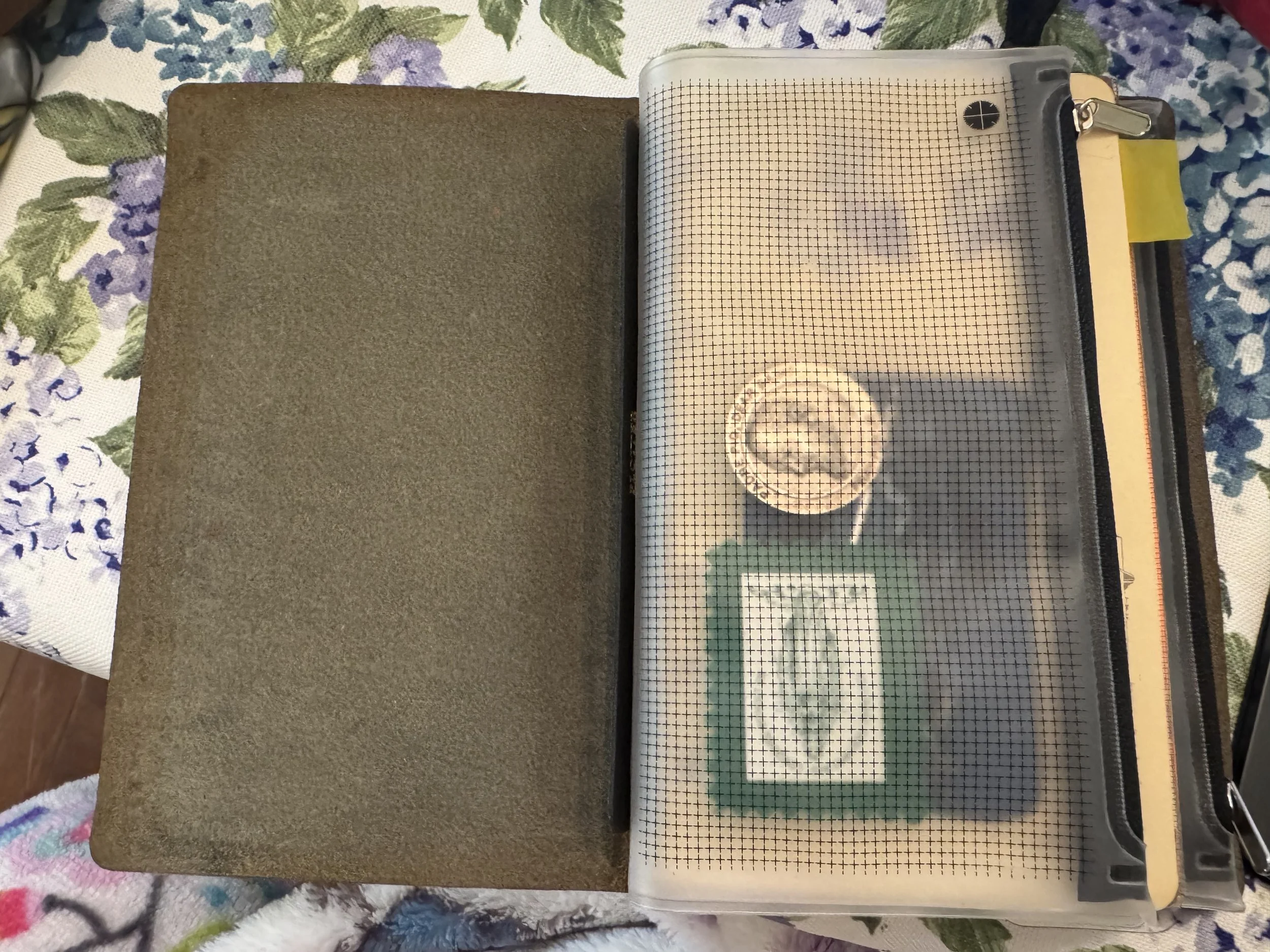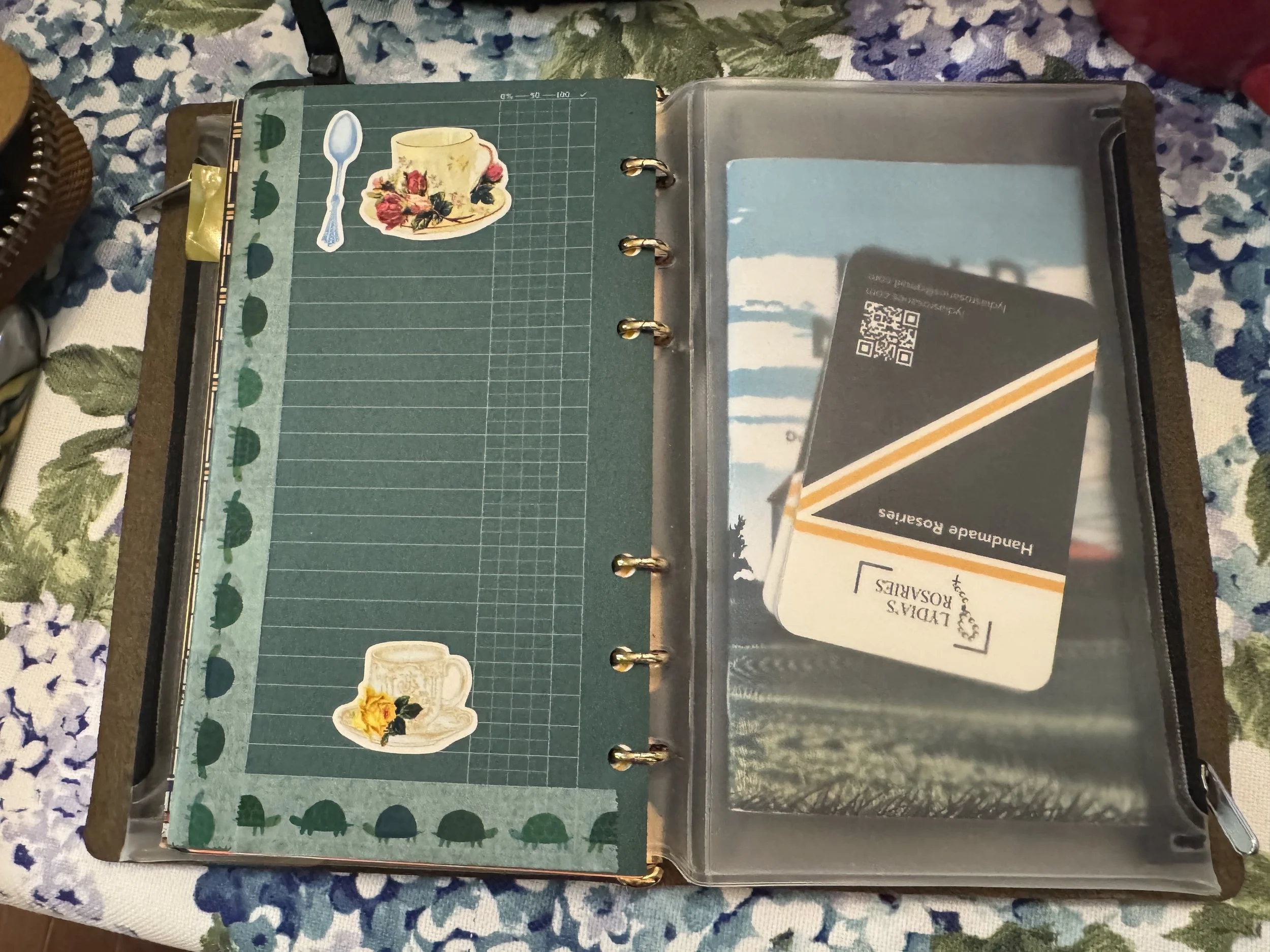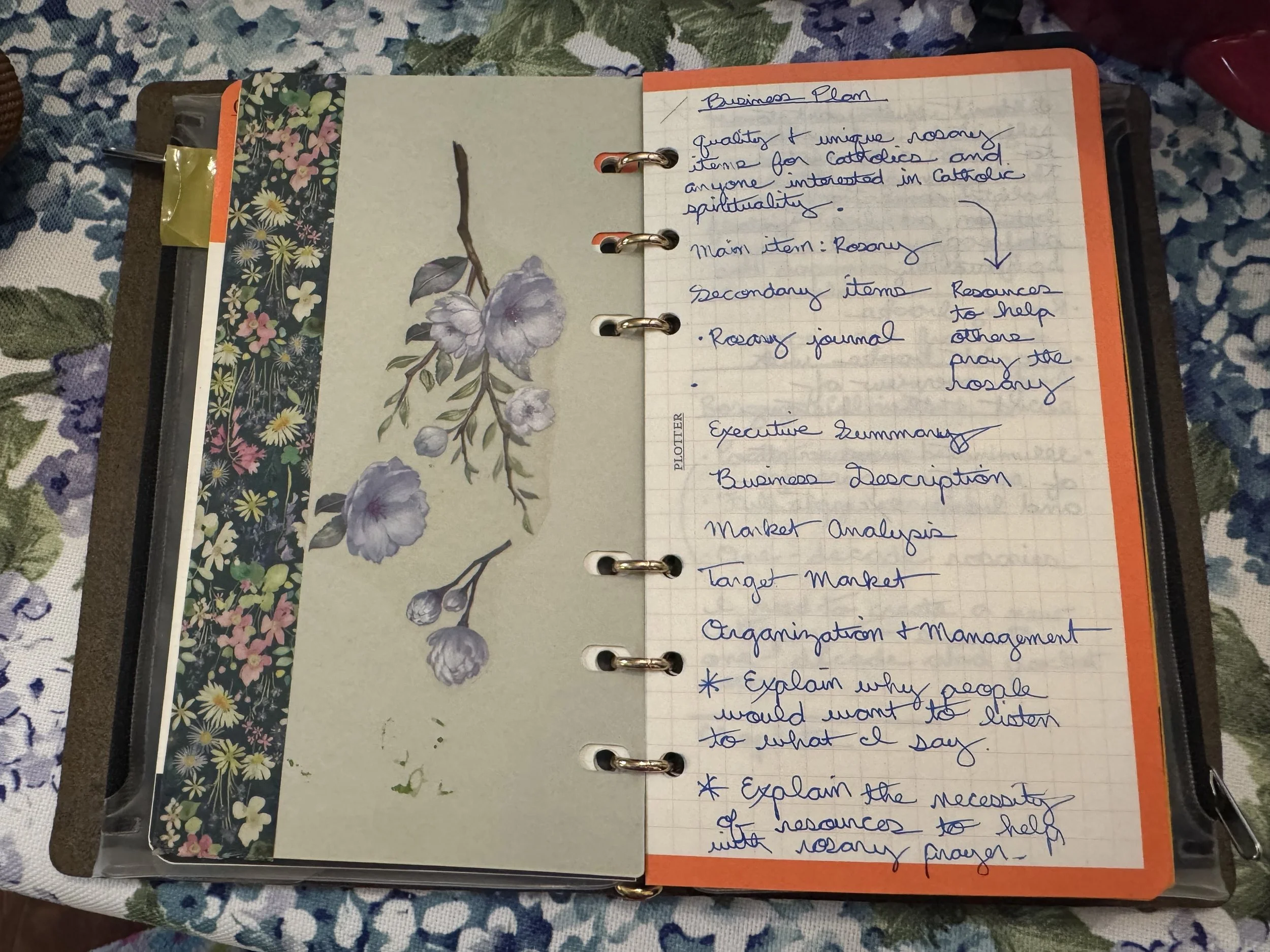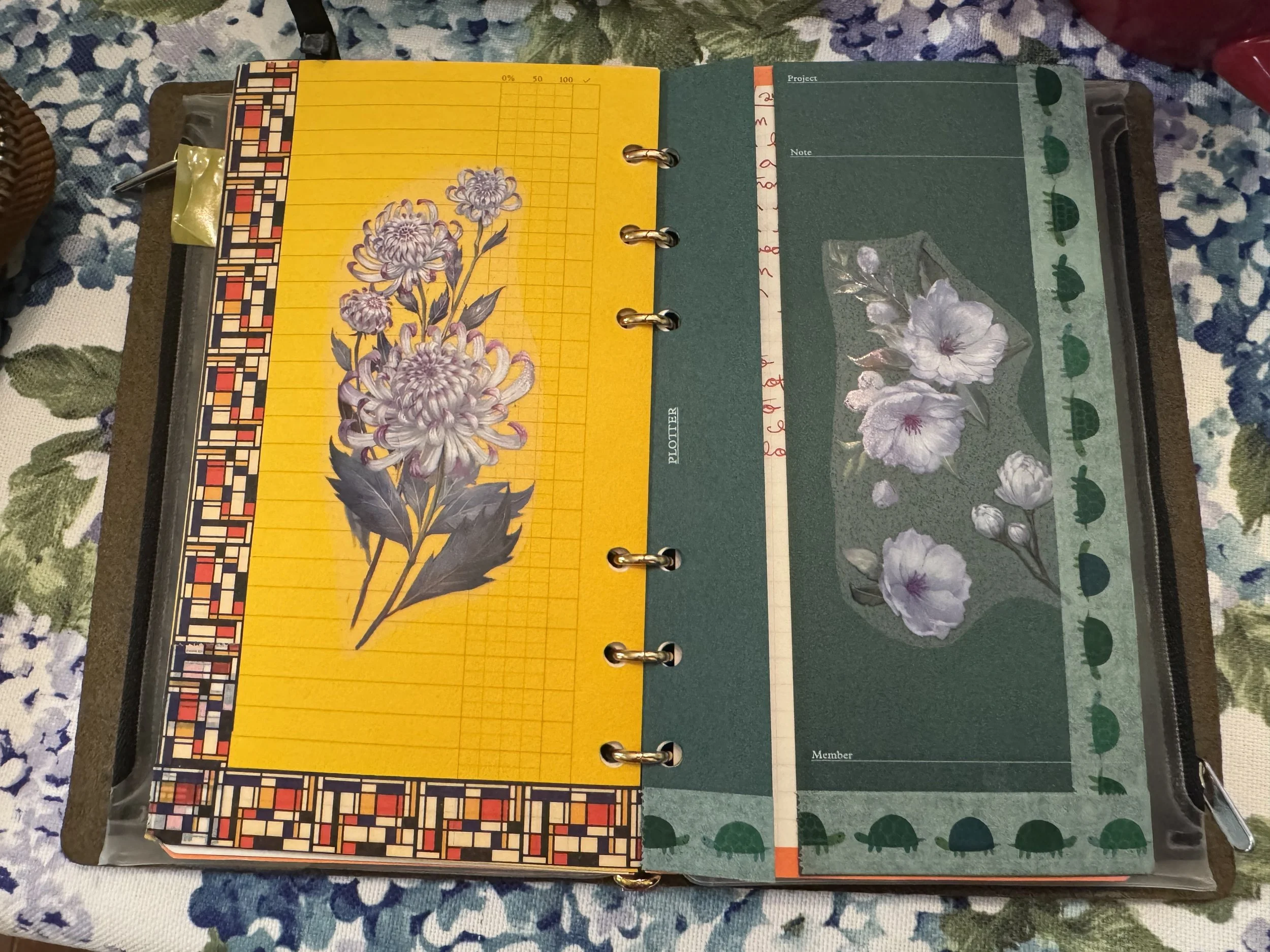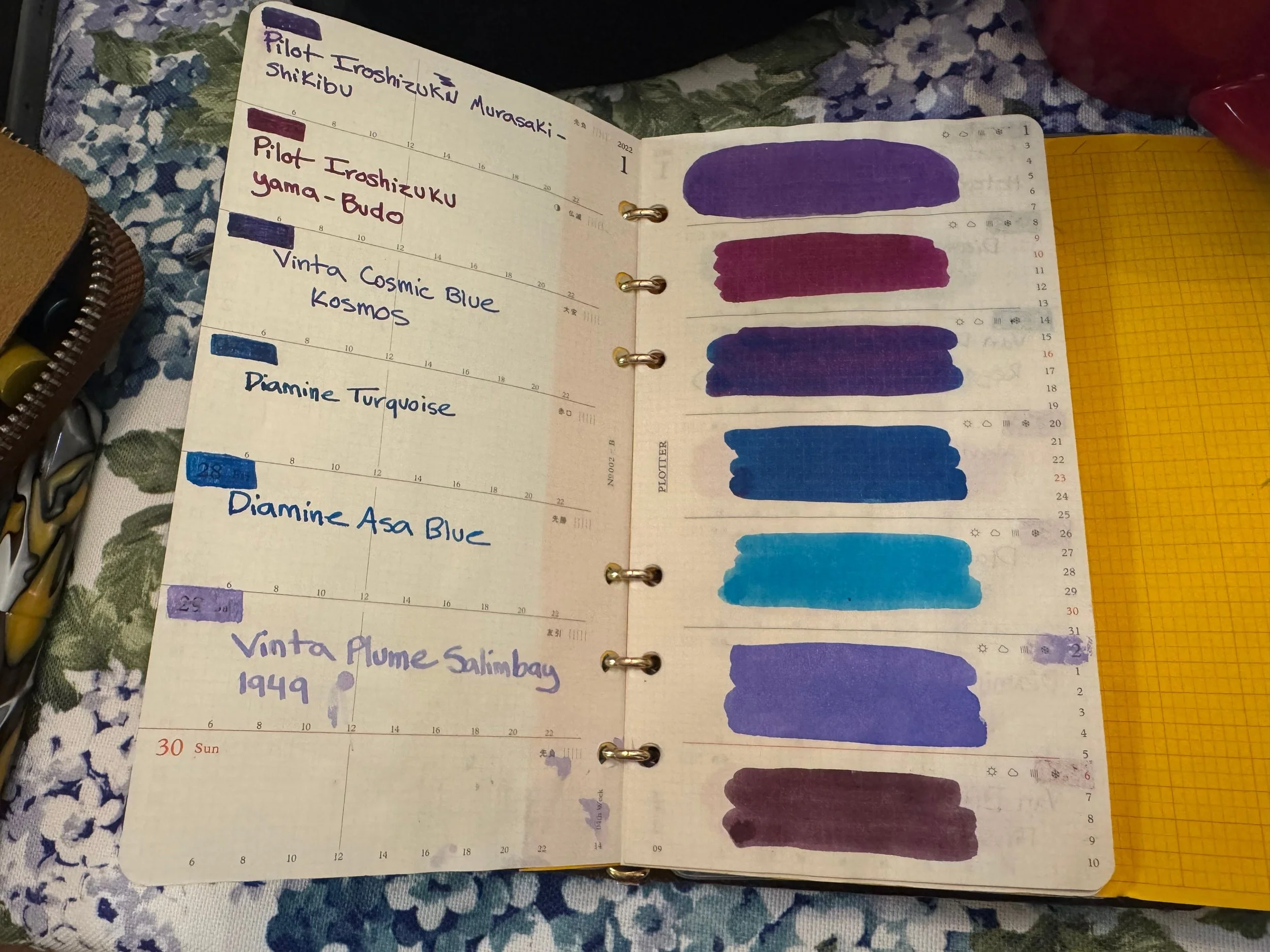Over the past month I started attending daily Mass once a week. It’s been a practice I’ve slowly incorporated into my life as I have tried to rebuild my routines. I try to attend on Wednesdays or Thursdays as a mid-week boost to spiritually and mentally get me through the last part of the week without devolving into frustration and confusion, as I tend to do a lot lately.
Anyway, enough about my confessions. For those not familiar with the practice, daily Masses are smaller and more intimate than the Sunday Masses. They are also much shorter, usually running about 30 minutes, which gives me enough time to make it back to work in an hour on my lunch break.
This practice has enabled me to reexamine my bible-size Plotter use and how it can enable me to reflect during Mass and at other parts of my life when I need to slow down and reflect. If you’re not religious, I hope this can enable you to create your own system to reflect and pause. And as always, you don’t have to use my exact tools. Use what speaks to you, whether cheap or expensive, that can easily adapt to your life.
Getting Over the Snags
One aspect of attending daily Mass that always tripped me up was fasting before communion. It was difficult to dedicate enough time to fast one hour before communion in the middle of the day when all I want to think about was food. But exercising in the mornings enabled me to better control my diet throughout the day, where like Bilbo Baggins I have a first and second breakfast, leaving me enough time to wait until later in the afternoon to eat lunch.
In the back of my Plotter, I have a section for PCOS-friendly food options that have helped me stay on track with my diet. Making these changes has enabled me to think more clearly and take control of the choices I make throughout the day.
Daily Missal
For Sunday Masses, churches usually use hymnals or leaflets that list all songs, prayers, and scripture verses that pertain to the day we’re celebrating. All churches throughout the world who follow the Gregorian liturgical calendar will use the same scripture verses in their services every day. You don’t have to guess what the verses of the day will be, and can somewhat guess what the music and homily/sermon will touch on. This includes Daily Masses, too, but churches usually don’t have hymnals to cover readings for everyone every day. Some parishes have subscriptions to monthly missal booklets for parishioners to use. Some people use phone apps like Universalis or iMissal. Those have been excellent apps to help me start, but I don’t like using my phone in church, so I use a Daily Roman Missal by the Midwest Theological Forum.
Creating a Custom Setup for Daily Masses
This inspired me to rethink my bible-sized Plotter usage, which I have discussed before but was looking for something new I have written before about creating a notebook system for Sunday Mass, but I wanted something different for weekday Masses. In this instance, my bible-size Plotter has been a great companion to house specific prayers and quotes that I reflect on.
A traditional Catholic practice is saying a prayer called the Angelus at noon. This prayer, which dates back to the eleventh century, commemorates the incarnation. On a weekday Mass, we all say the Angelus before the start of Mass. Since I’ve never prayed it much, I don’t have it committed to memory. So I wrote the prayer in my Plotter to reference.
This kickstarted a new idea of dedicating a section of my Plotter to prayer. Ring binders, especially small ones that require a set amount of pages, can be more daunting to me than bound notebooks, but they serve purpose when I want something discreet and to the point. I like ring binders for creating custom layouts and sections, but I don’t like tearing paper out all the time.
Call it a weird psychological glitch, fear of letting go, or a form of stationery rebellion, but I like holding on to some type of permanency in my systems until I’m good and ready to change. So I have landed on quarterly reference system, which specific sections that I can glance at several months before I get the itch to change. My other sections include a monthly calendar and meal planning that highlights the best foods to eat and avoid at specific times of the month.
But back to the fun part. Recently my local stationery shop began carrying bible-size Iroful paper for ring binders. Iroful is 75gsm paper with a matte finish. I decided to use this paper for the Angelus and other prayers that I would like to reference throughout the day, especially during the service. Along with the Angelus, I wrote out the Anima Christi prayer. Written in the medieval times, this prayer is traditionally said silently after receiving communion.
Outside of Mass, I also like to reference these prayers and random saint quotes I find on social media. Writing out these quotes by hand and easily referencing them in a small notebook throughout the day anchors me in a world that is filled with necessary and unnecessary digital noise. I like the beauty in having these quotes in my own custom system, with my own doodles, that I can take anywhere and anchor myself with.
The Iroful paper has been a nice addition to my system due to its thickness and ability to make colors pop. I like using it specifically for this section due to its thickness. It’s too much for simple lists and calendar events, but it’s excellent for areas that I want to reference for a while. Being slightly thicker than other types of Plotter paper enables me to stop and realize that I’m entering a more sacred section of my notebook.
This is another fun experiment for me to find small ways to take me away from the digital medium and ground myself in a more realistic space using analog tools. It enables me to use my creativity in a way that’s not restricted by set templates and designs, nor does it pull me away from reality like my phone does at times. As always, balance is key. The most important factor is being intentional with all the tools you use, digital or analog, and being in control of how they move you forward. Daily Mass is an essential aspect of my life that grounds me, and the analog tools enable me to more fully understand this truth.
















